Social media management is the process of overseeing every detail related to your brand’s social media presence. To grow awareness and connect with your target audience.
Social media managers are typically the individuals responsible for this. And their main tasks may include:
- Developing a social media strategy
- Creating and posting social content
- Responding to comments and messages from followers and other users
- Monitoring social channels for brand mentions and relevant conversations
- Identifying and collaborating with influencers
- Setting up and managing paid social media advertising campaigns
- Tracking key performance metrics and creating reports
- Continuously optimizing tactics based on performance data
Some businesses have a dedicated social media manager or a team handling these activities. Others outsource to freelancers or social media marketing agencies.
Below, we’ll discuss why social media management is crucial for your brand, your options for social media management, and how to manage your social media presence if you opt to do it yourself.
Social media management ensures you’re working toward team objectives that contribute to your company’s larger goals.
Specifically, it can help with:
- Building brand awareness
- Fostering community
- Driving traffic to your website
- Generating leads
- Cultivating customer loyalty
Let’s say you’re looking to grow brand awareness across social media by a certain percentage. To support your business’s revenue growth goals.
Now, consider that more than five billion people use social media.
If you use social media, you can tap into valuable opportunities to reach and engage your target audience (i.e., people who are likely to buy from you).
For example, Wendy’s has 3.7 million followers on X (formerly Twitter).
Their posts regularly reach hundreds of thousands of people. And generate tons of comments, shares, and likes.
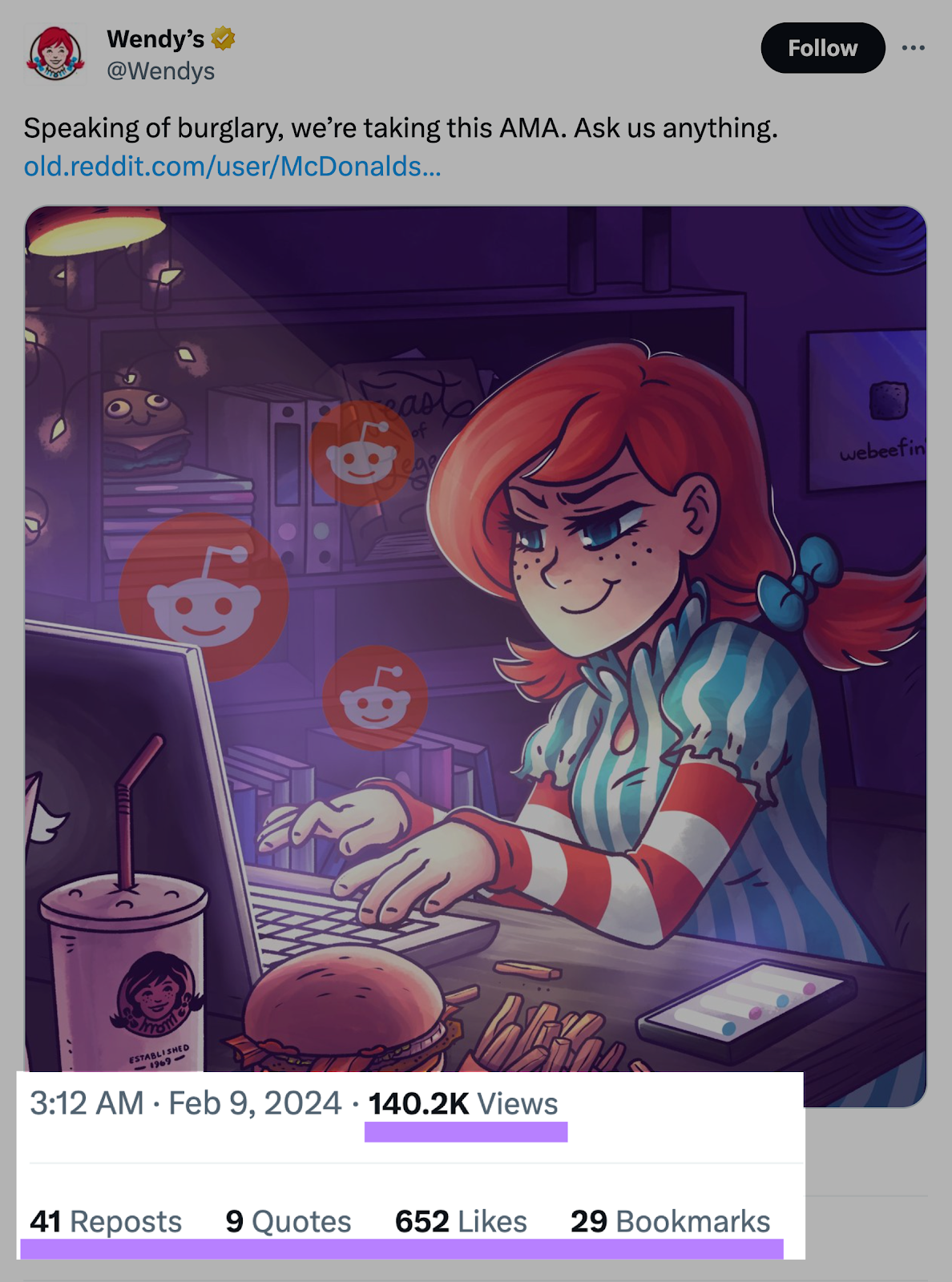
They also actively respond to users.
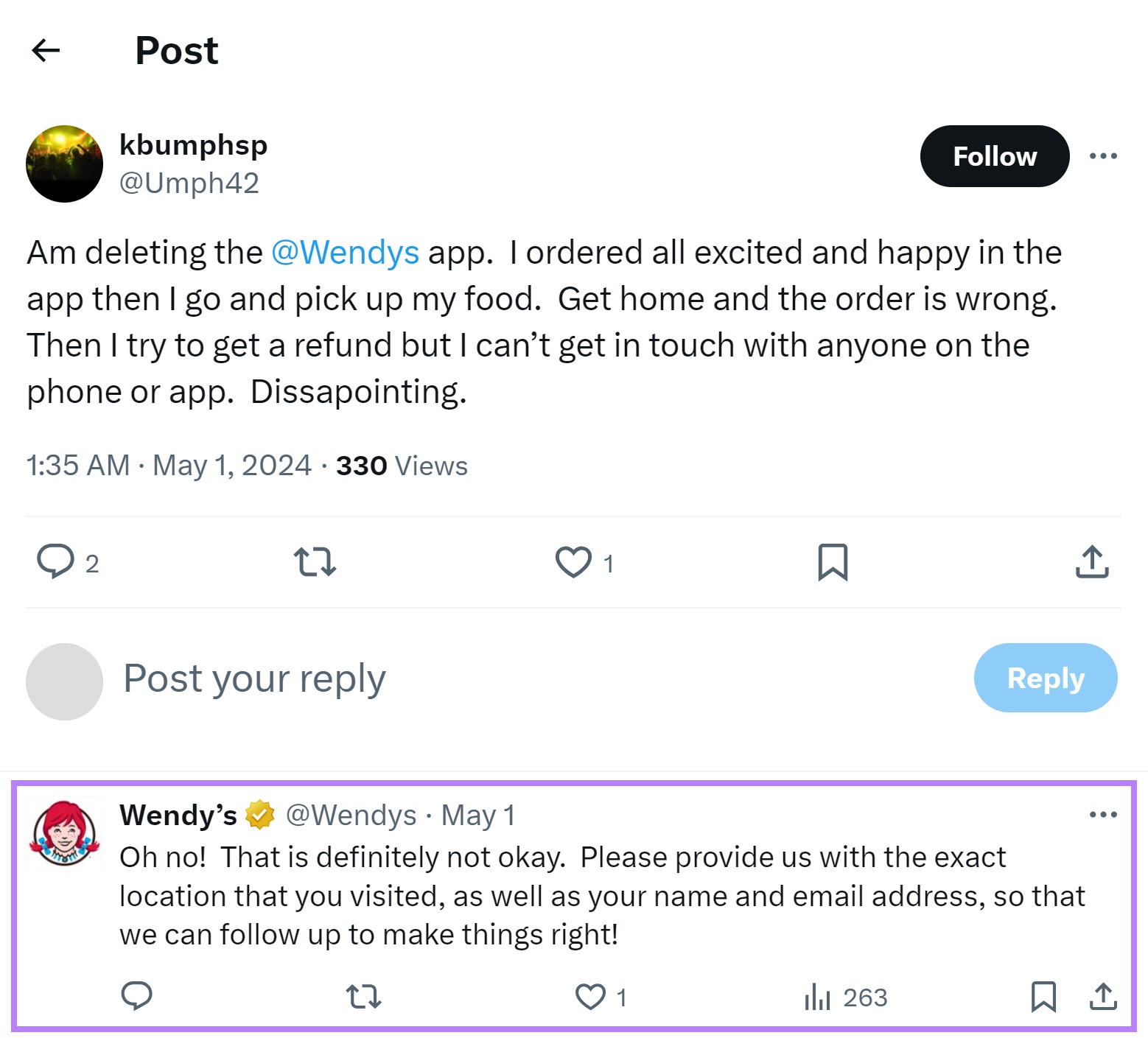
All this creates a lot of positive attention for Wendy’s. Which can drive people to their restaurants.
On the other hand, poorly managed social media accounts can send negative signals. Suggesting that a brand is out of touch or indifferent to its audience.
This perception can push potential customers toward competitors.
In short, social media management helps you maintain a positive brand image and build relationships. Which can translate to business success.
Choosing between in-house and outsourced social media management depends on your company’s needs and resources.
In-house social media management gives you complete control, makes implementing changes quick, and ensures posts and comments are always aligned with your brand. But it can take time to develop expertise, and the necessary tools and hiring can be costly.
Outsourced social media management gives you immediate access to skilled professionals and frees you to focus on more pressing matters. But it removes some of your control, often involves delays, and can quickly become expensive depending on the services you need.
If you’re a small business looking to grow your presence without a huge upfront investment, hiring an in-house social media manager could be a good start.
But if you need specialized knowledge or want to scale quickly, an external agency or freelancer may be a better choice.
You can manage social media using the tools available on the social platforms themselves. But many businesses use third-party social media management tools to consolidate their efforts in one place and gain additional insights.
Below, we’ll cover tactics for social media management success. And social media management software solutions you can use for each step.
1. Set Goals
Setting social media management goals gives you direction and ensures you stay on track to reach company goals.
Your goals should be specific, measurable, achievable, relevant, and time-bound (SMART).
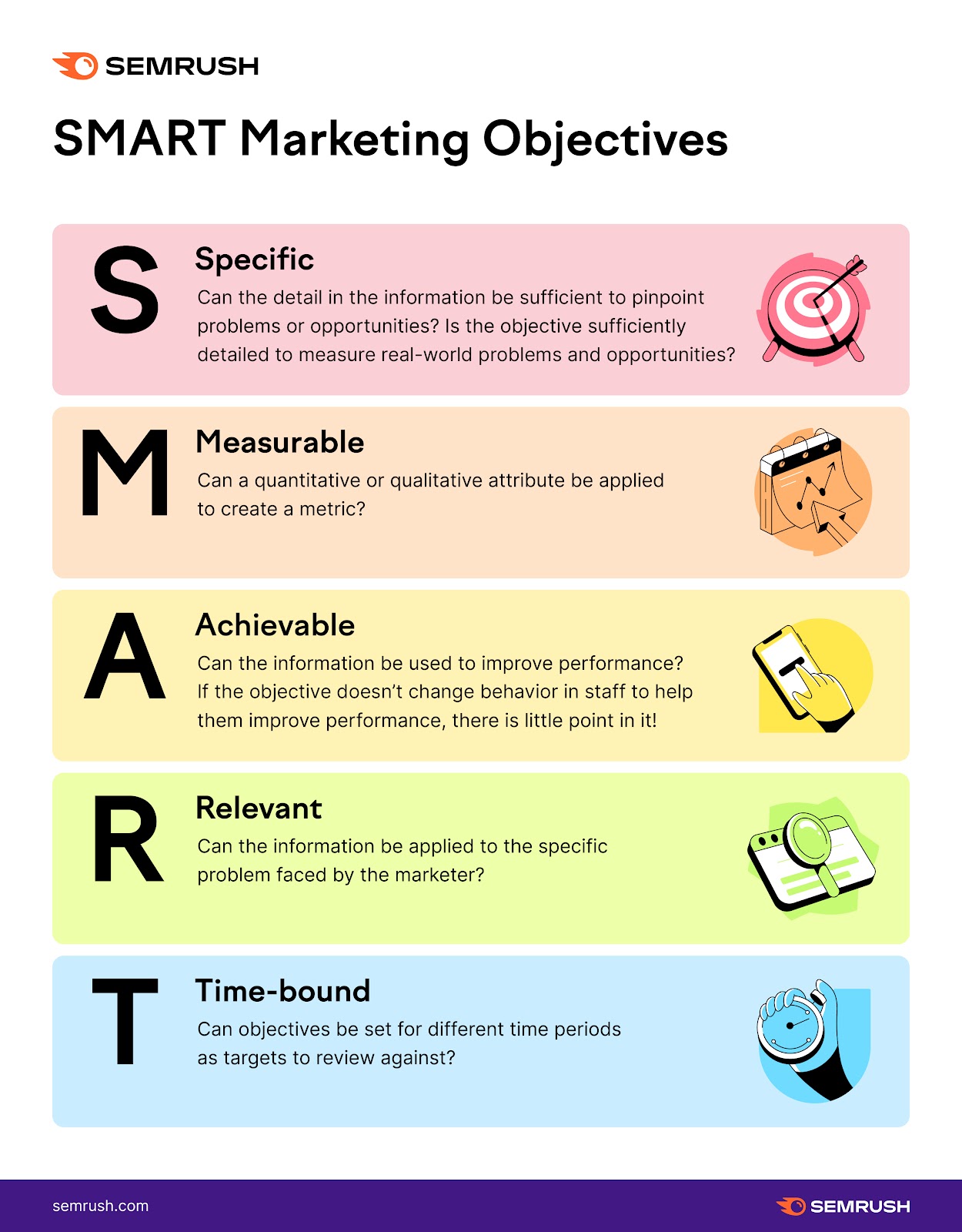
For instance, rather than a vague goal like “increase engagement,” a SMART goal would be “increase the average engagement rate by 20% within the next two months.”
This clarity guides decisions about what formats to create, what topics to focus on, etc. And ensures you use your time and resources efficiently.
2. Identify Your Target Audience
Understanding your target audience can help you choose the right platforms, create compelling content, and engage with users more effectively.
Start by gathering insights about your current social media followers by looking into your social media analytics.
Platforms like Meta provide audience insights. Such as age, gender, and location breakdowns.
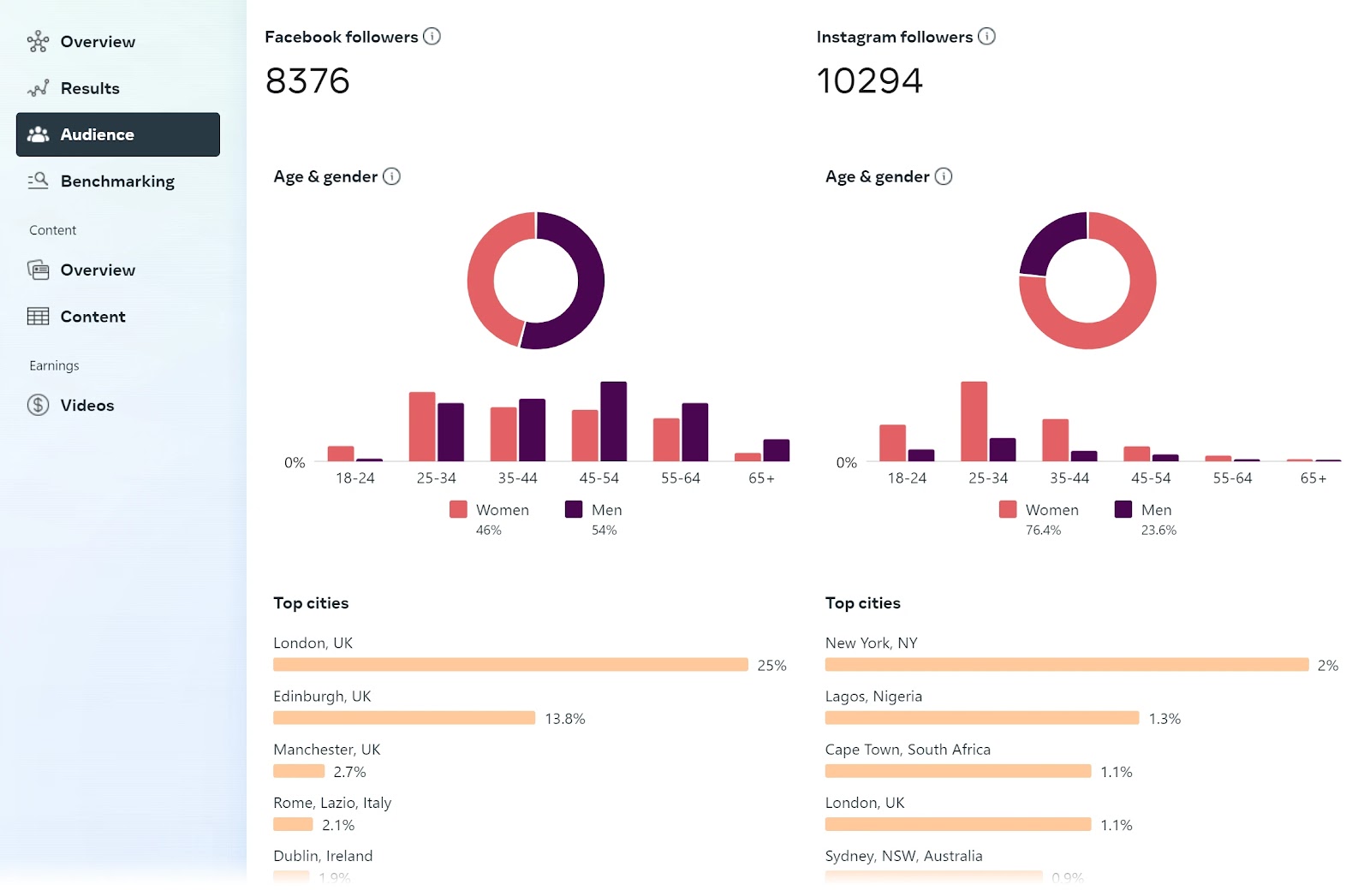
Next, use Semrush’s One2Target to analyze your target audience.
Open the tool, choose your location, and enter the domains of up to five competitors. Then, click “Analyze.”
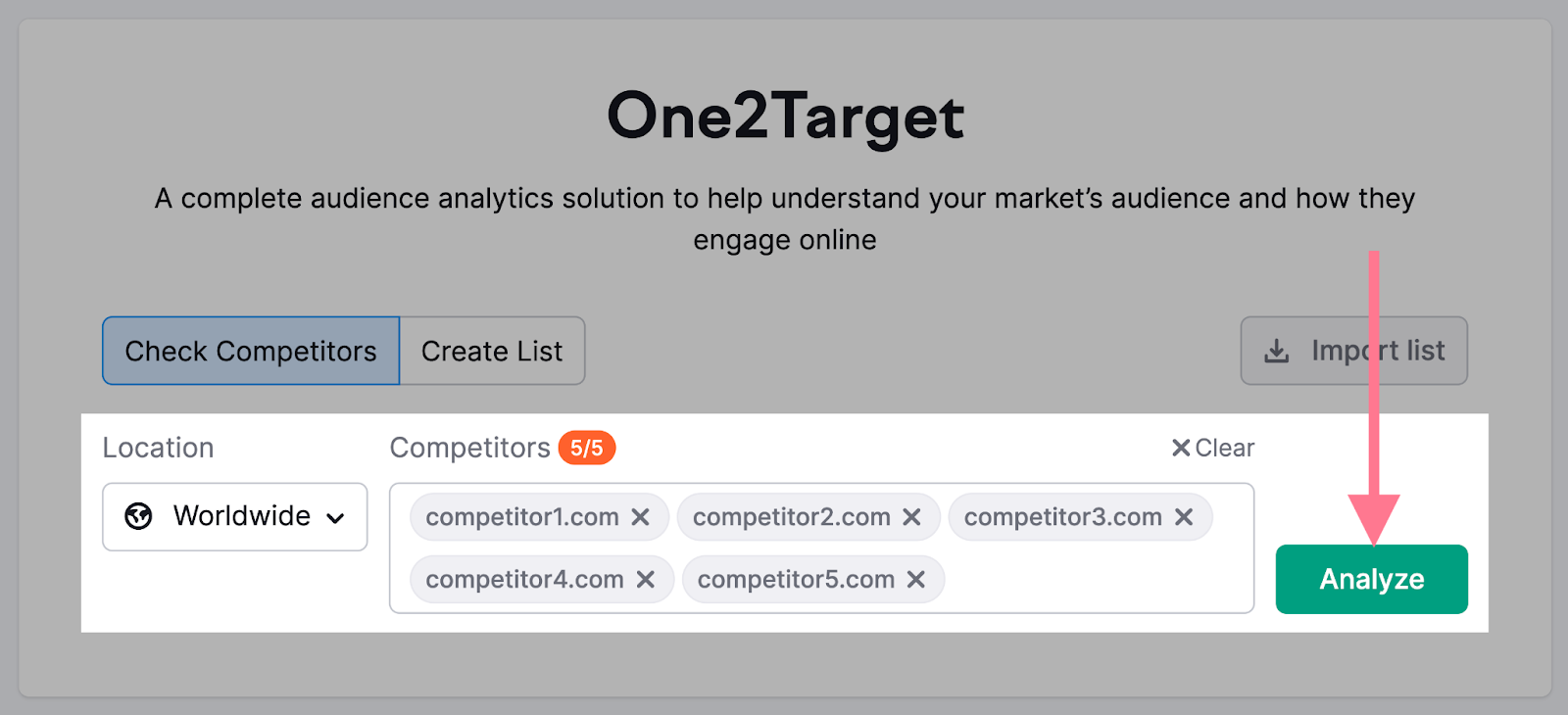
Check the “Demographics” tab (which you’ll reach by default) to learn about the audience’s age, gender, and location data.
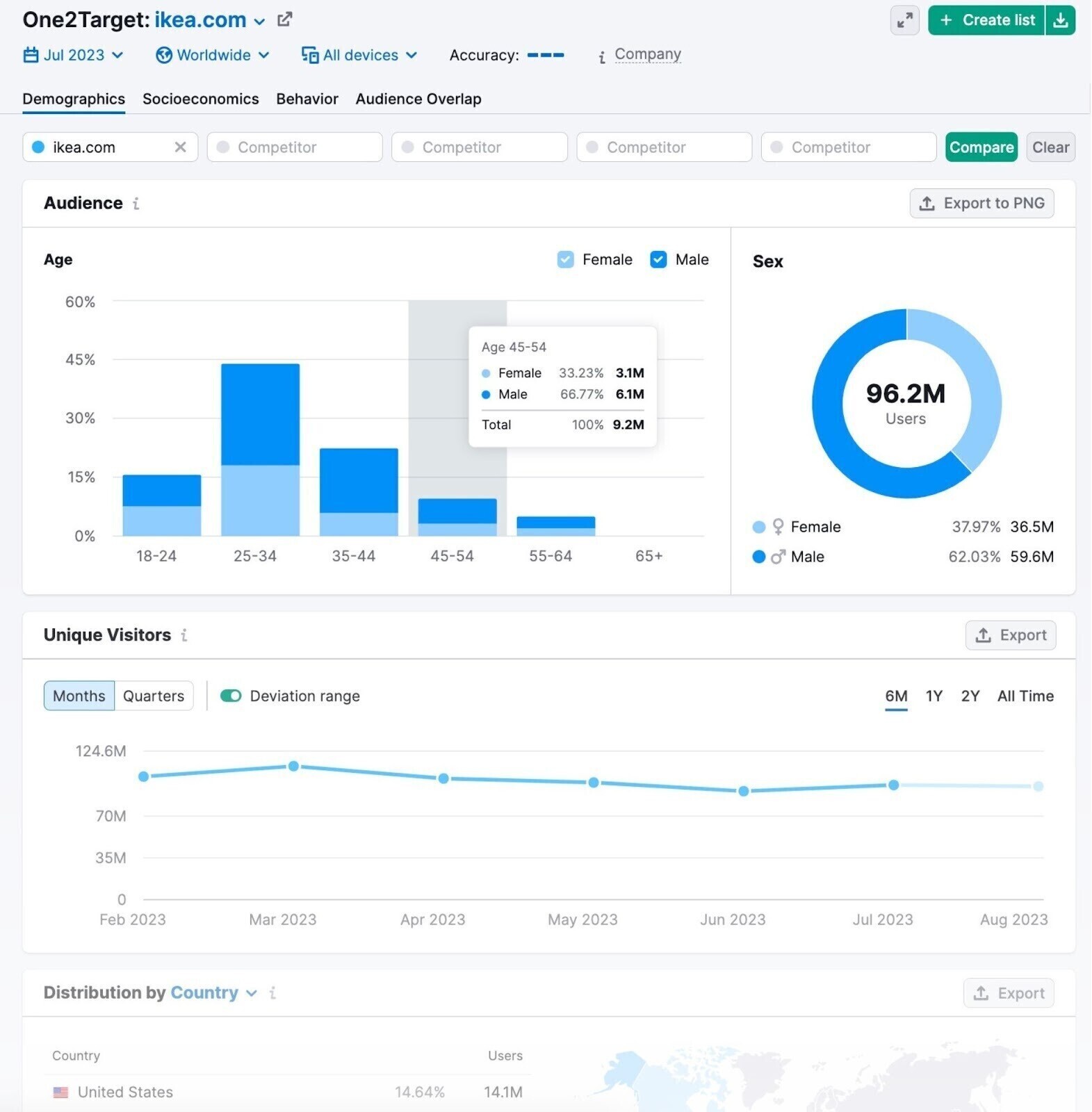
Go to the “Socioeconomics” tab to see the audience’s household size, income level, employment status, and education level.
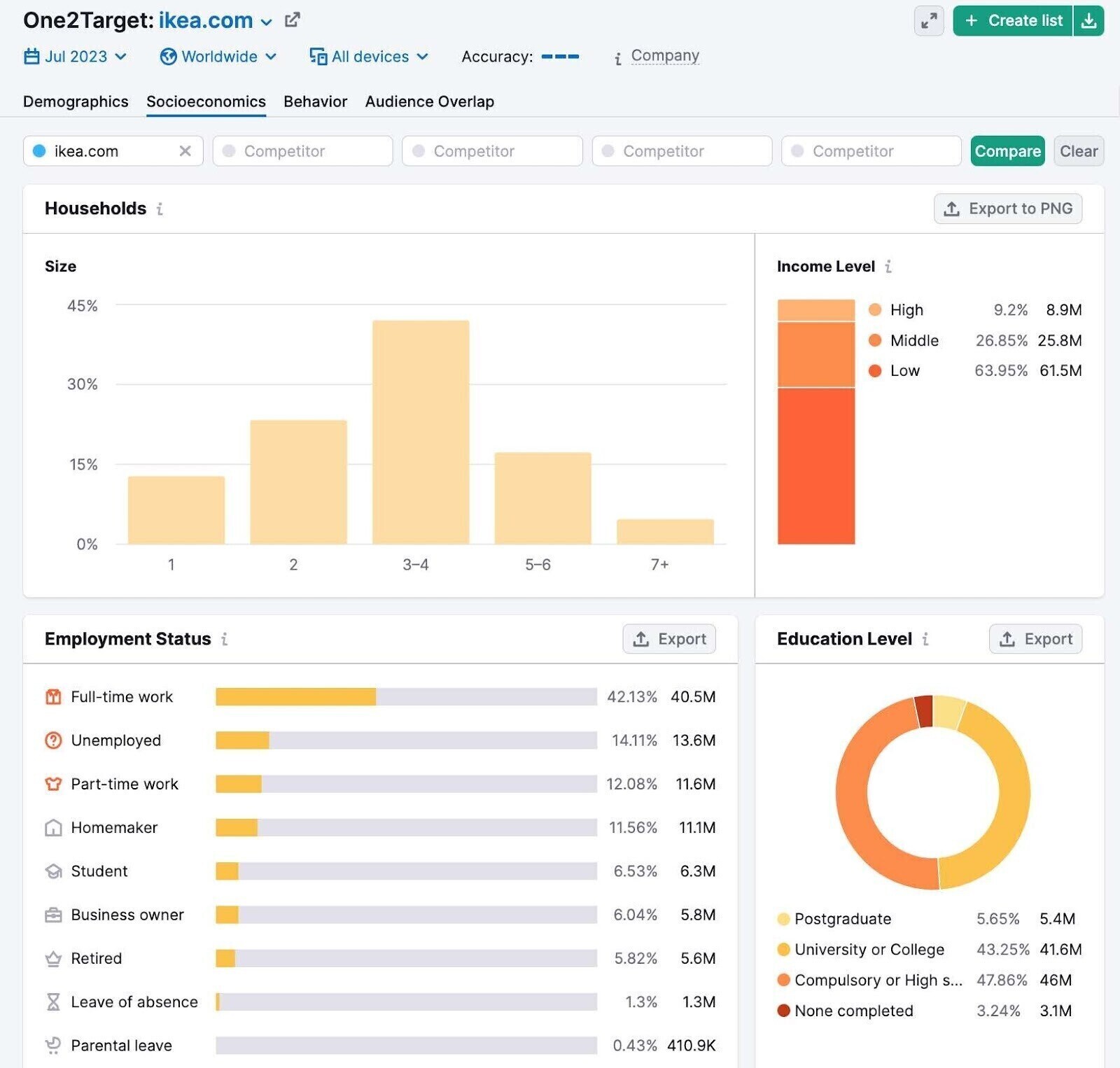
Finally, click the “Behavior” tab to see the interests, device types, and social platforms that are most popular with this audience.
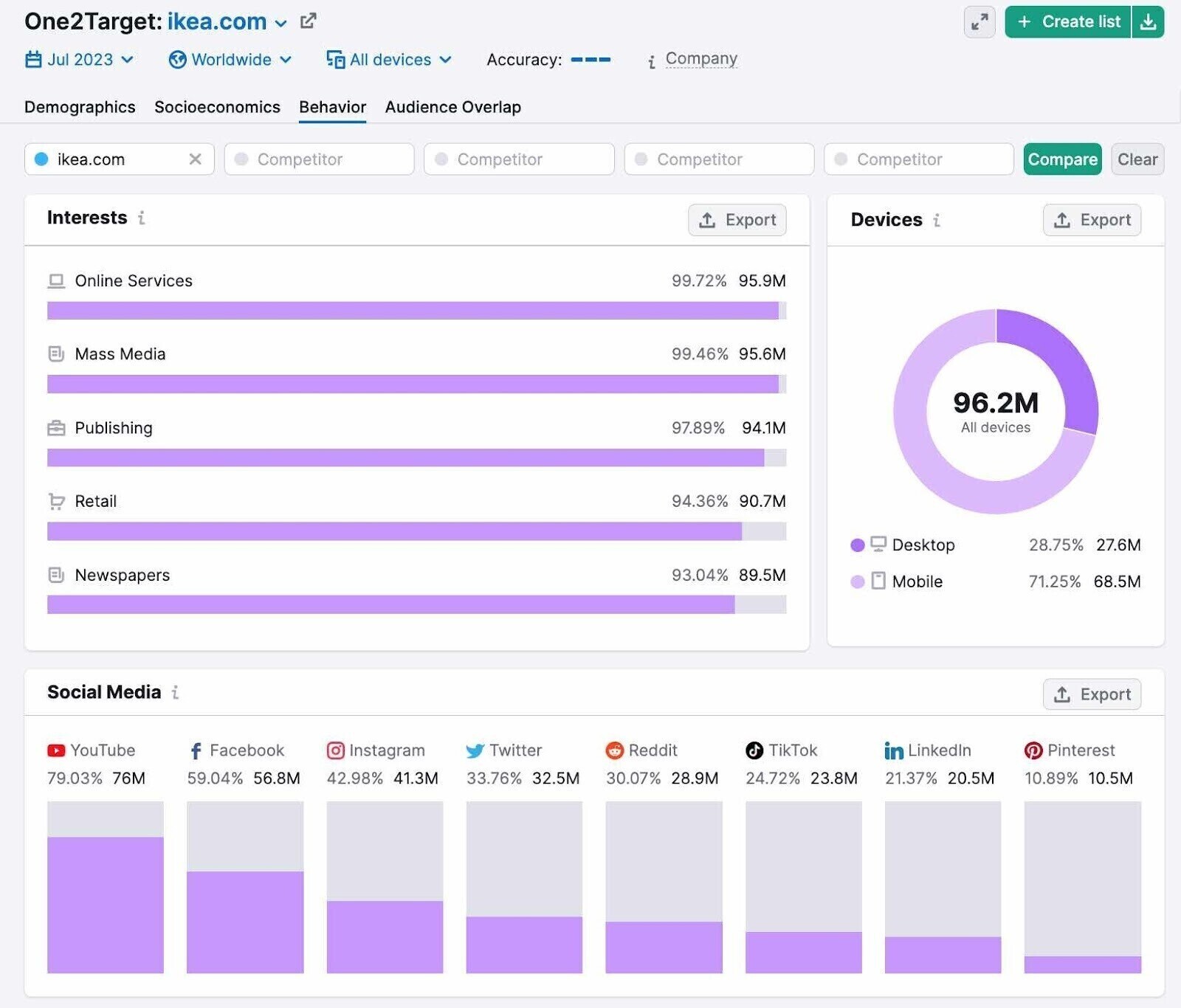
Use these audience insights to prioritize your social media management efforts.
For example, if the data shows the audience is largely people between the ages of 35 and 34 who work full time and prefer YouTube, you might focus on creating short-form social videos.
3. Choose the Right Social Media Platforms
You can manage social media accounts on one or more platforms. But the right platforms for your brand depend on who you’re trying to reach.
For example, many people use Pinterest to get home decor inspiration. So it’s great for brands like IKEA.
And they get more than 10 million views on their Pinterest boards every month (as of February 2024).
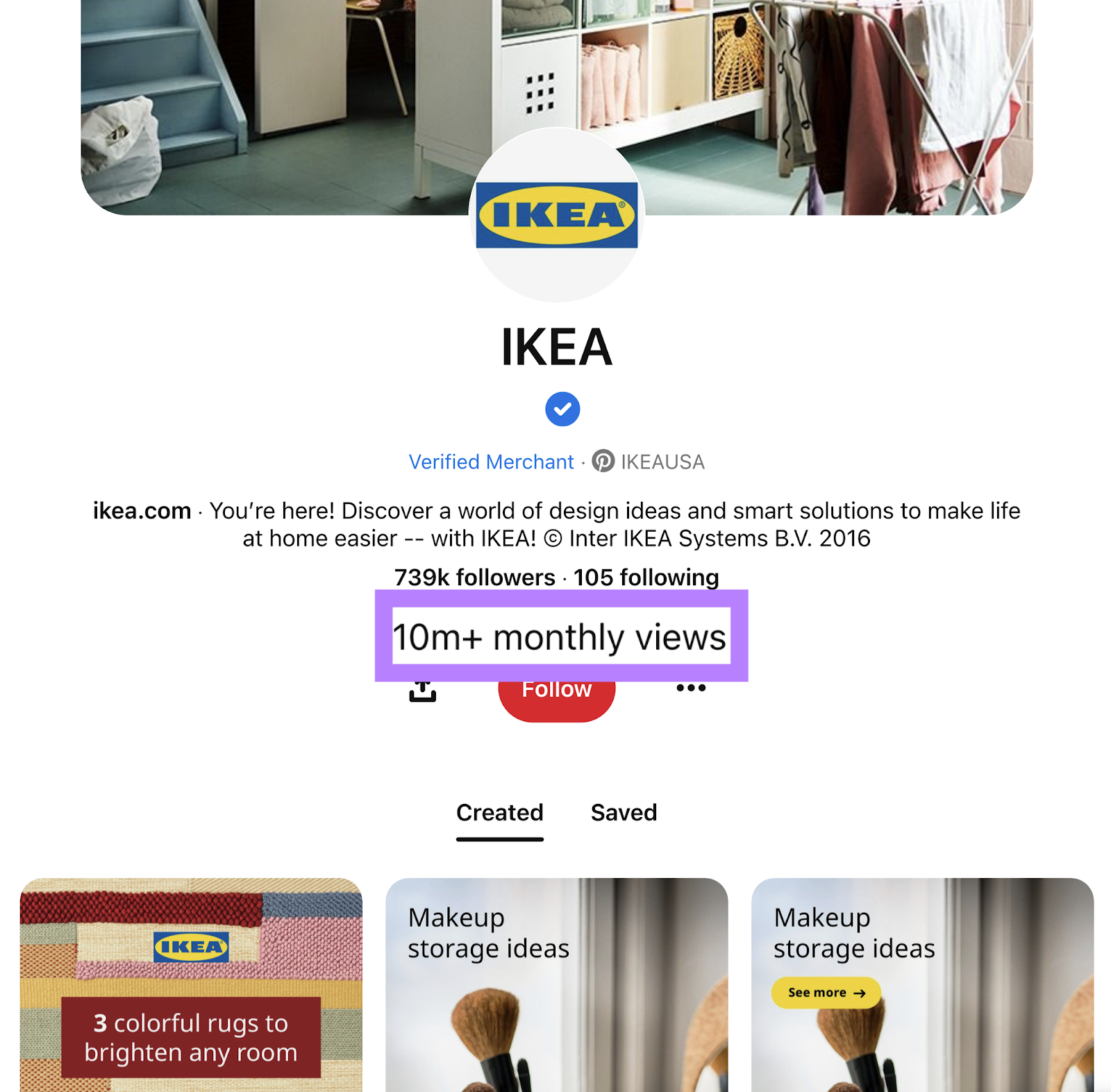
Whereas lots of tech lovers hang out on Discord. So brands like Samsung are present there.
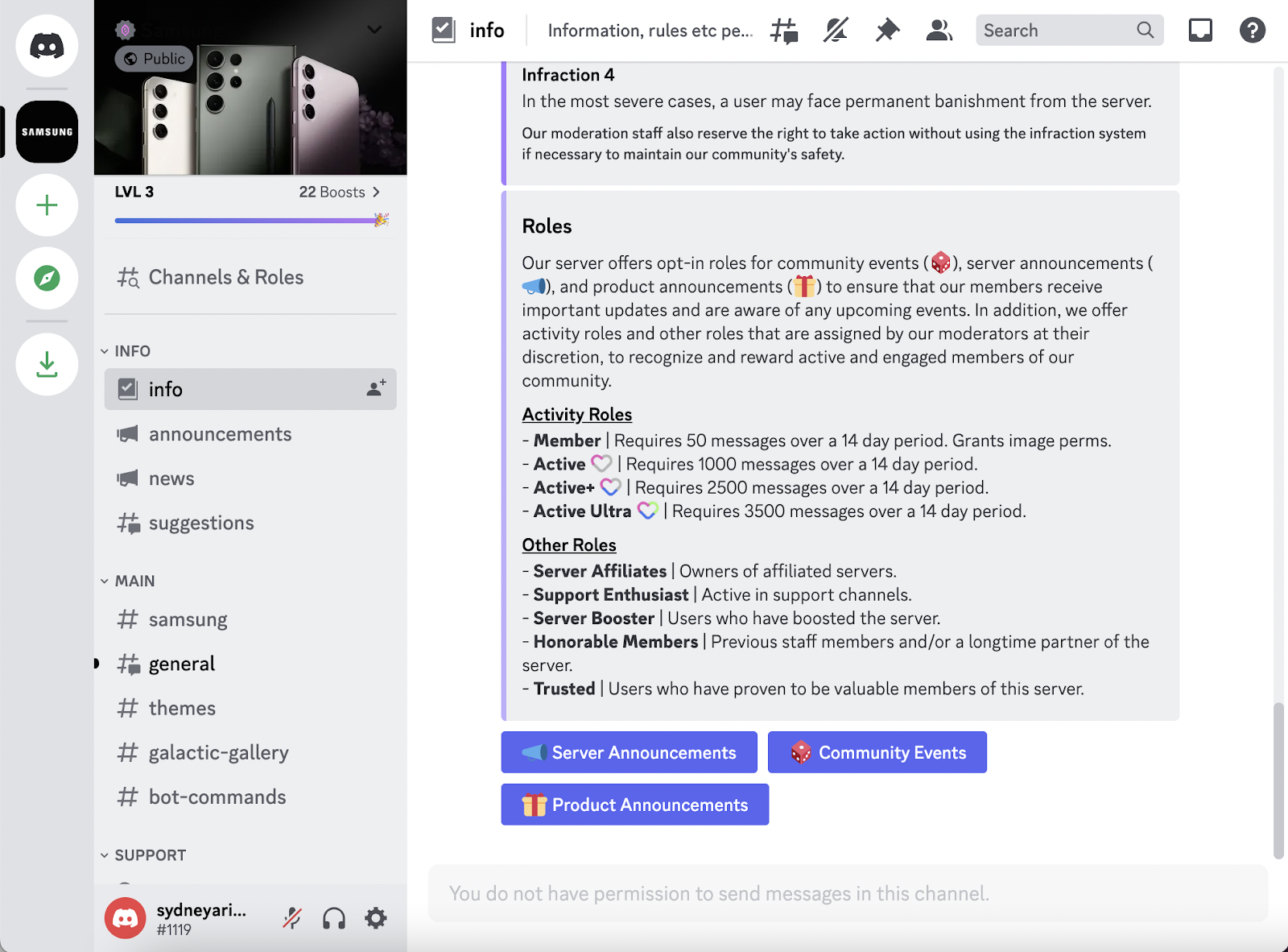
Revisit the information you found in One2Target to identify the best platforms for you. And consider doing even more research into your competitors’ social media presences.
Their follower numbers give an idea of potential reach (or the total number of people who potentially see their content).
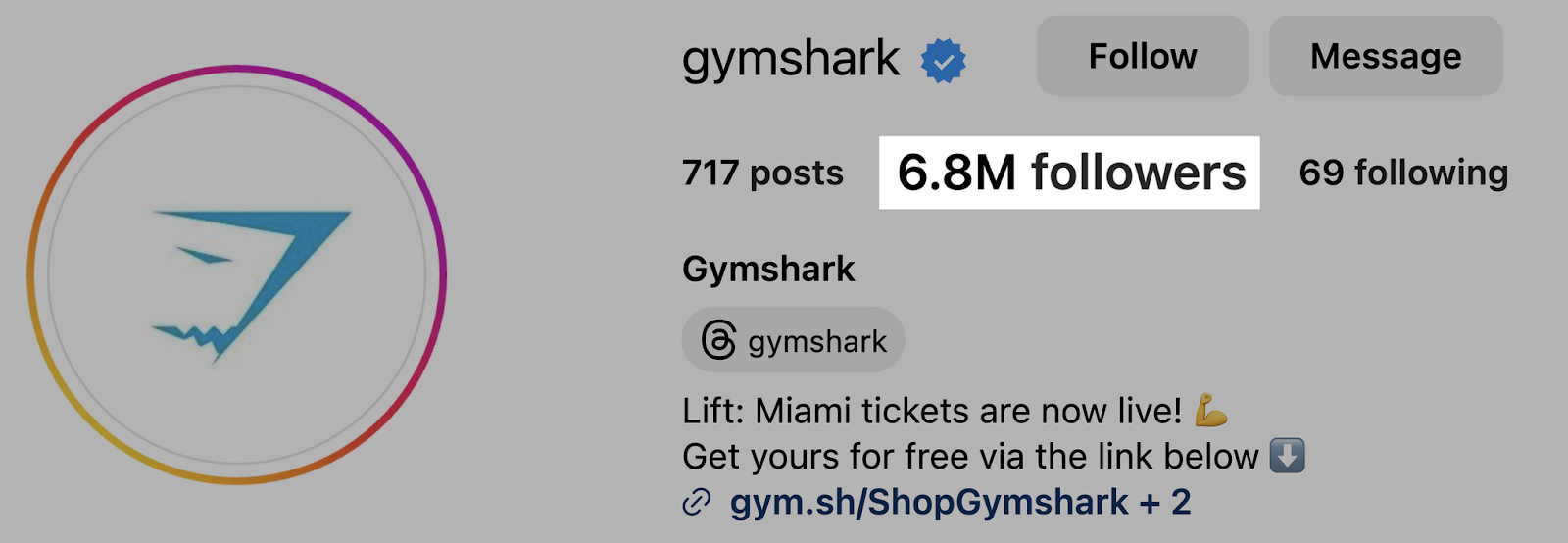
While views, likes, comments, and shares show engagement potential.
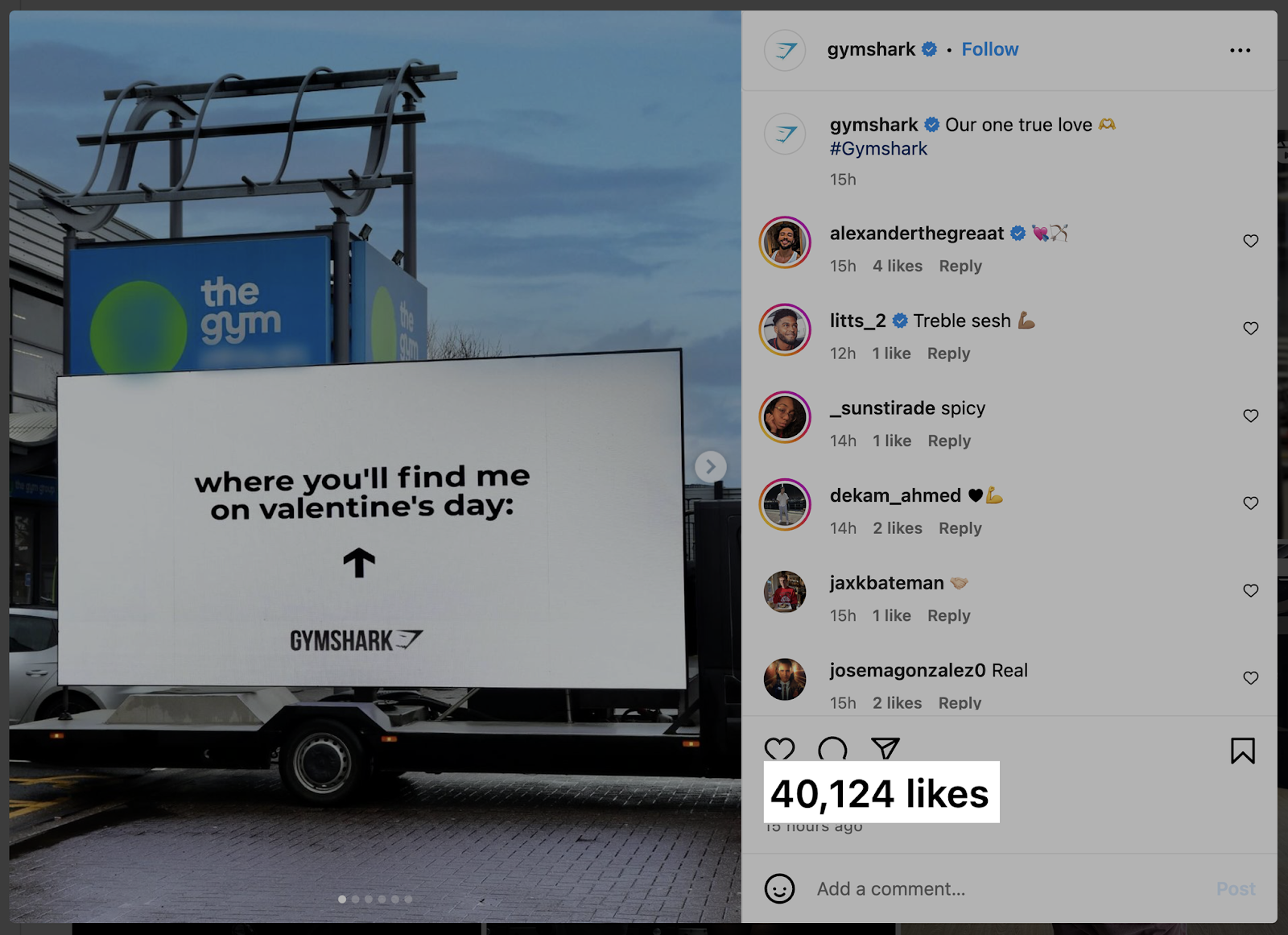
Once you’ve created your list of potential social platforms, you need to prioritize.
Use these tips to help:
- Start small: It’s better to manage one platform well than several platforms poorly. Start with one or two accounts and build your presence over time. To reduce the risk of spreading yourself too thin.
- Play to your strengths: Start on platforms you’re familiar with. And stick to the content formats that suit them.
- Pick similar platforms: Repurposing content across multiple platforms can save you time. The more similar the platforms you’re using, the easier this is.
- Do a trial run: As a test, create a week’s worth of content for the platform you’re considering. This should give you a good idea of the resources required.
4. Create and Optimize Your Social Media Profiles
Now, it’s time to create (or optimize) your brand’s profiles.
The process differs by platform. But here are some best practices to keep in mind:
Choose Appropriate Social Media Handles
Many social media platforms require you to choose a handle. This is the alias your brand goes by on the platform.
Intuitive and consistent handles make it easier for people to find your brand. And tag you in conversations.
For example, Semrush goes by “@semrush” on YouTube, X, Facebook, Pinterest, and Instagram.
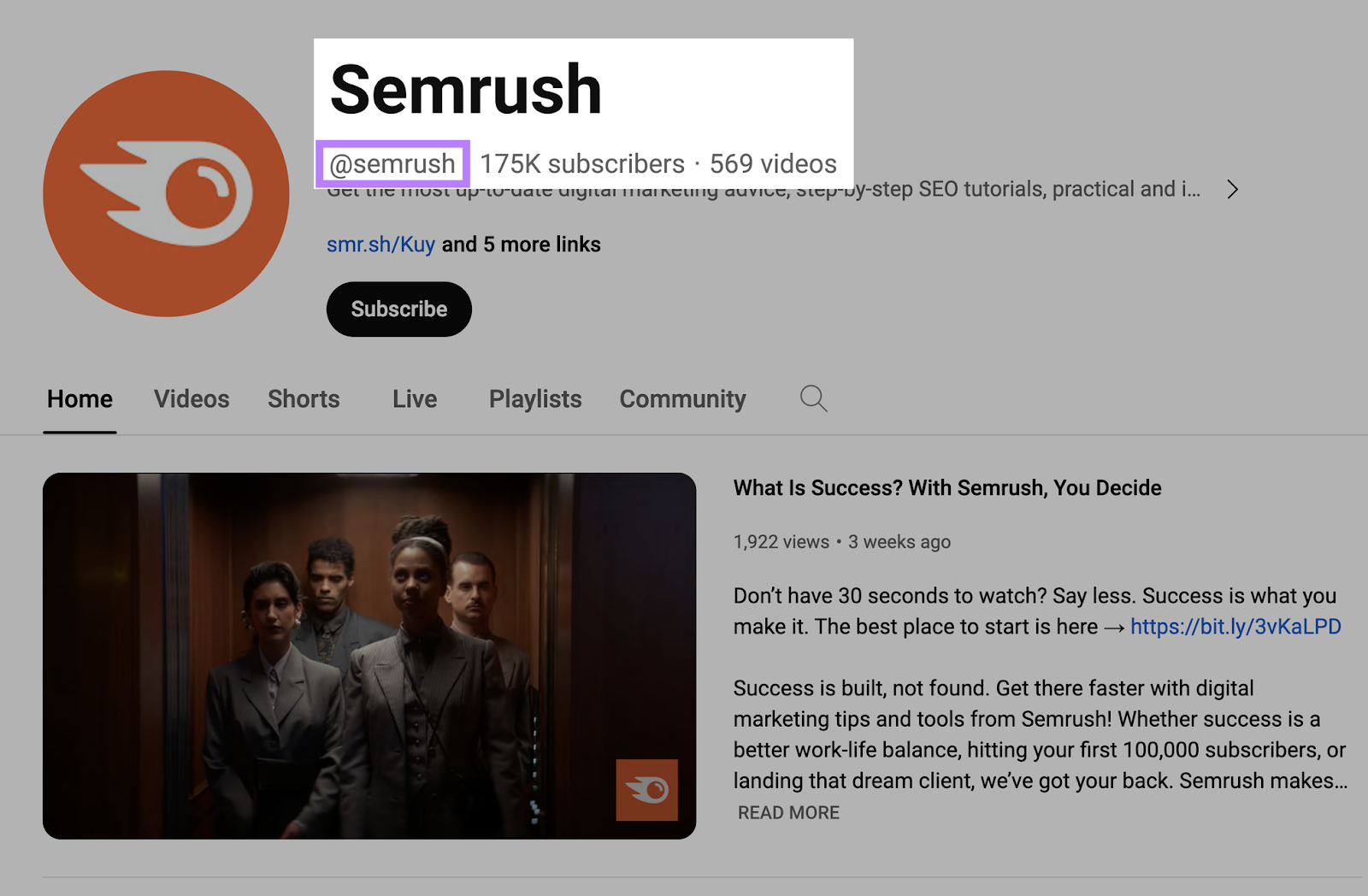
Creating multiple accounts? Use Namecheckr to see what handles are available.
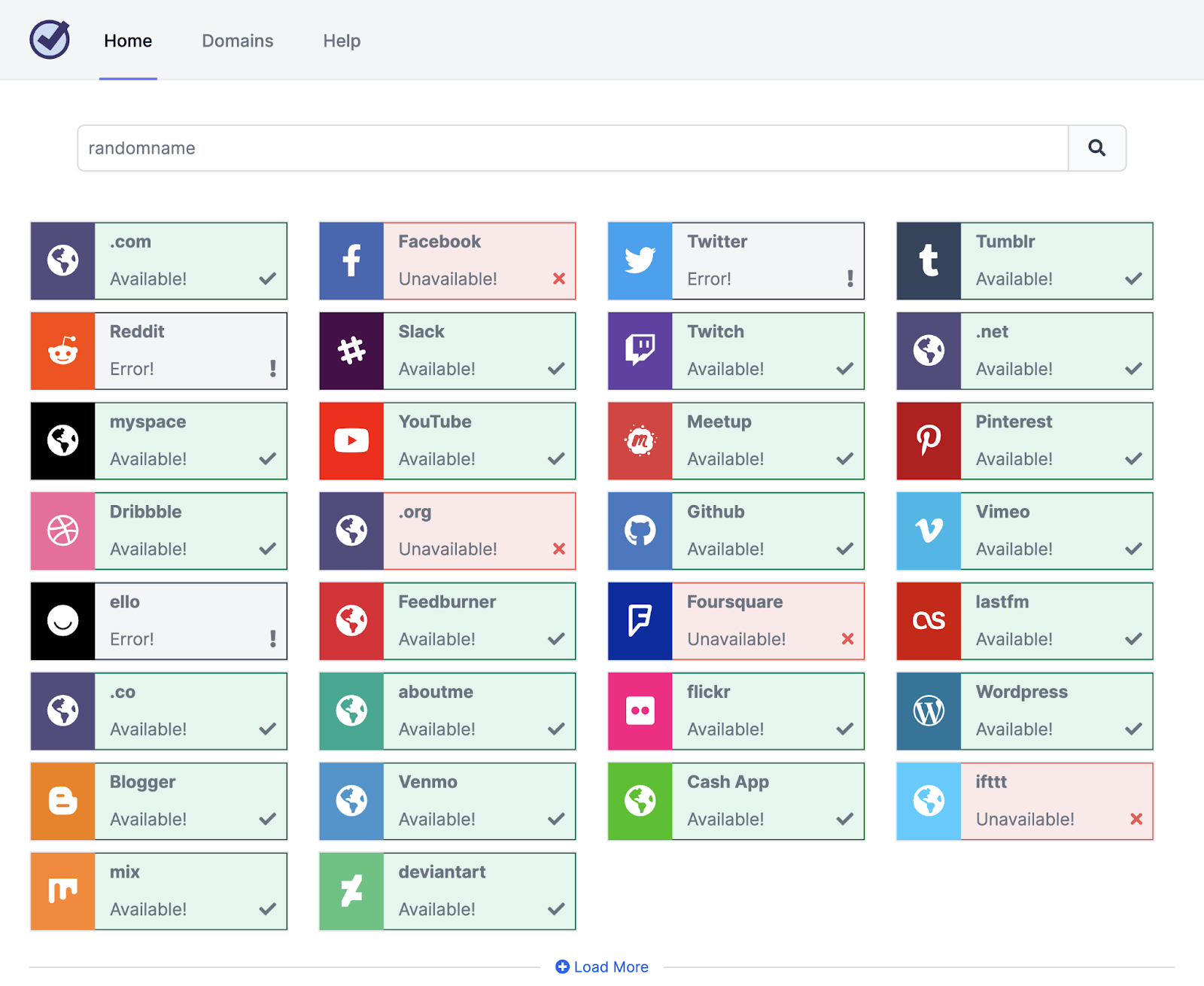
Want to change one of your existing handles? Check out the respective social platform’s support section for guidance.
Use Appealing Profile Pictures
Your profile picture is the main image associated with a social media account. And consistency across profiles makes it easier for people to recognize your brand.
Most businesses use their logo.

If you’re building a personal brand, you could use a high-quality headshot instead.
And know that some platforms allow you to upload extra profile images (e.g., the header image on X).
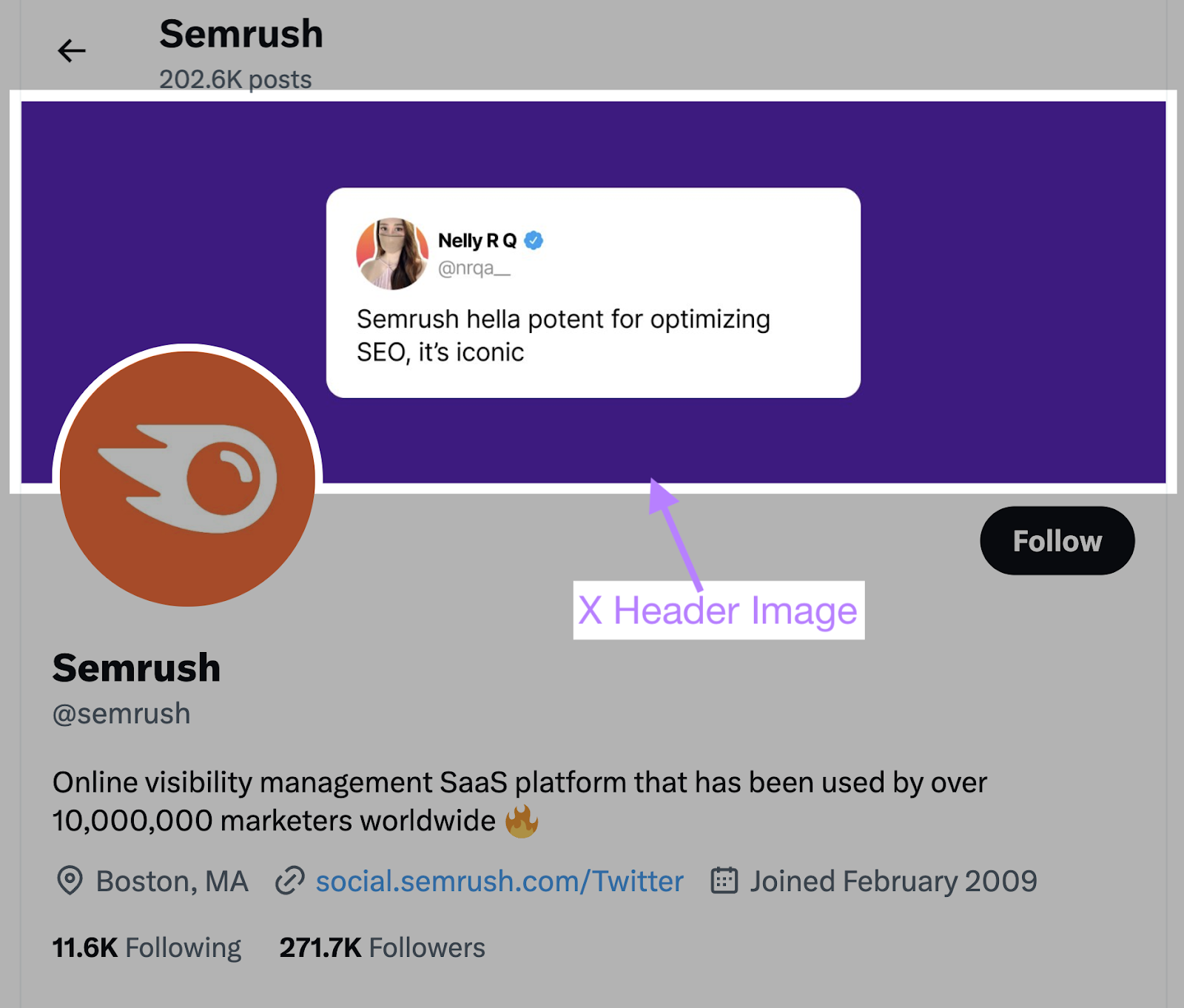
This can also be a great way to promote your latest campaign.
Write Compelling Bios
The bio is the short description that appears on a social media profile. Which you can use to explain what your business does and why someone should follow you.
For example, Semrush’s Pinterest bio uses social proof and an emoji to grab users’ attention.
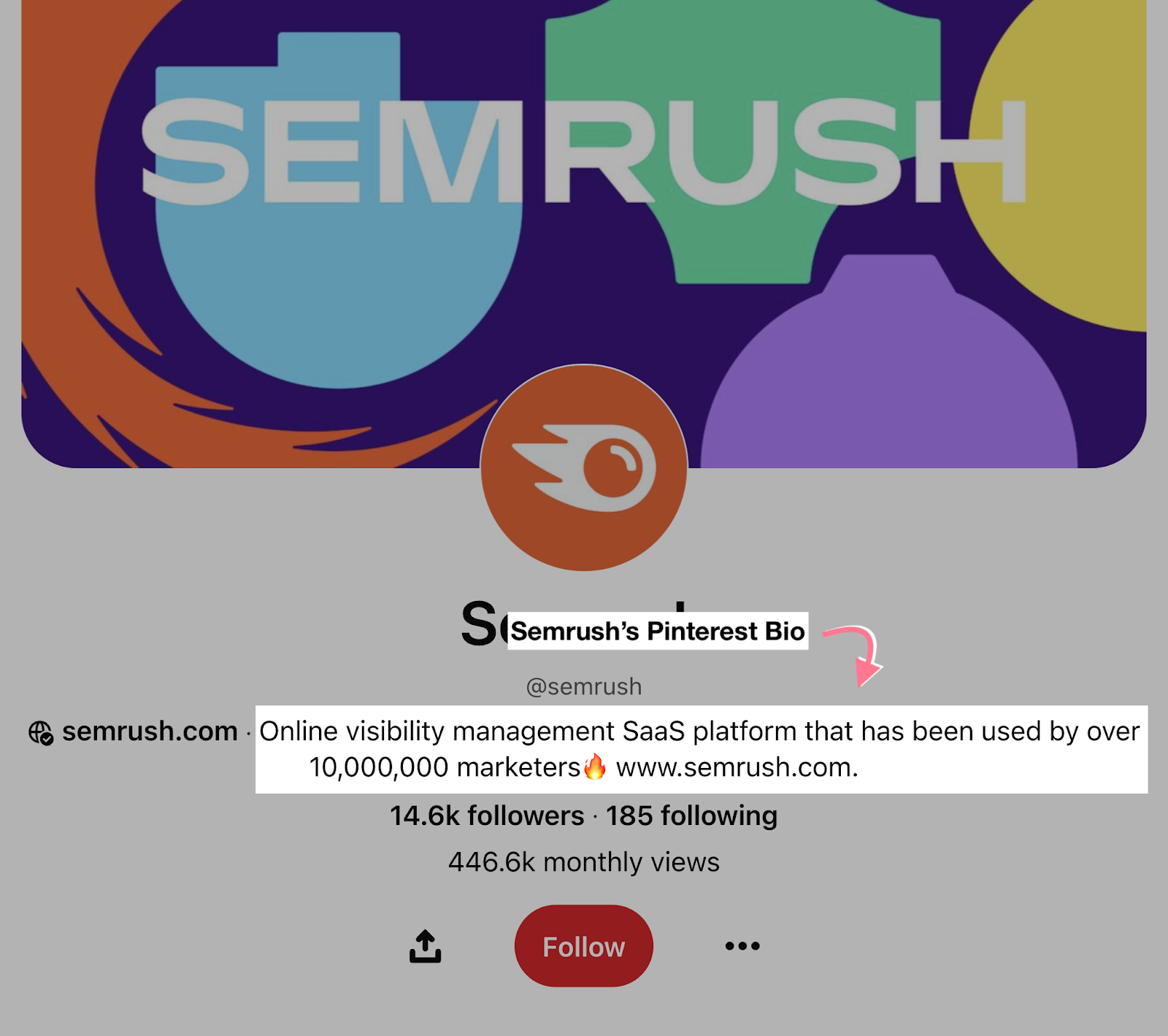
And fill in any other fields, such as your website URL and contact details. To make it easier for social media users to learn about and engage with your brand.
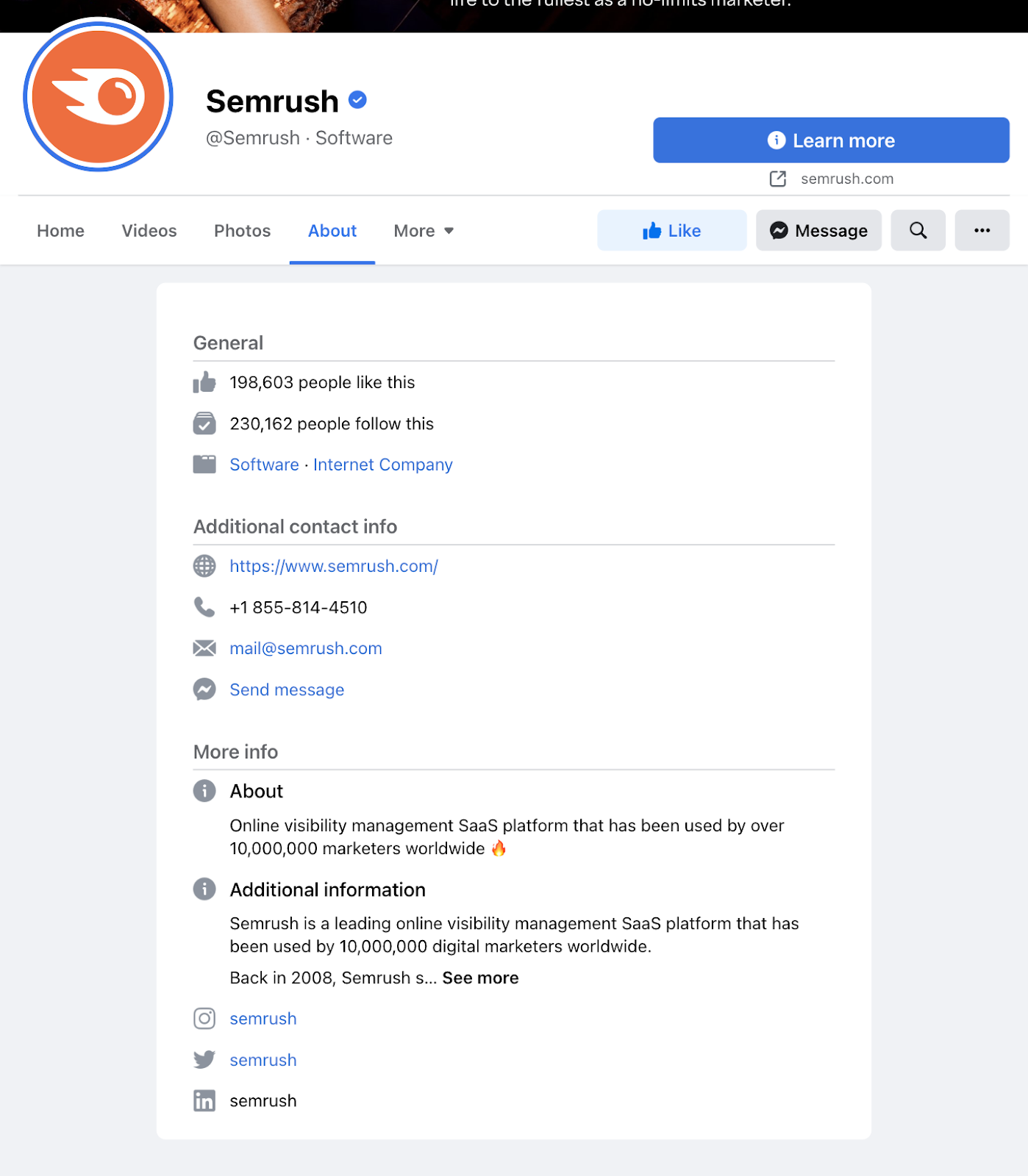
Try looking at your rivals’ bios for inspiration.
Complete Verification Steps
Social media verification is the process of proving that your brand account is authentic. That it really belongs to you or your business (and isn’t being run by an imitator).
Most social media platforms display a “Verified” badge on verified profiles. Like this:

If you can get verified, you should (just note that verification on X requires a paid plan). To build trust with users.
Modify Your Privacy Settings
Check each platform’s privacy settings to ensure anyone can find, follow, and contact your brand.
For example, “Public posts” are visible to people on and off X. And are eligible to appear in X search results and Google search results.
Meanwhile, “Protected posts” are only visible to your X followers.
To protect (or unprotect) your posts, go to your account settings. And click “Privacy and safety” > “Audience, media and tagging.”
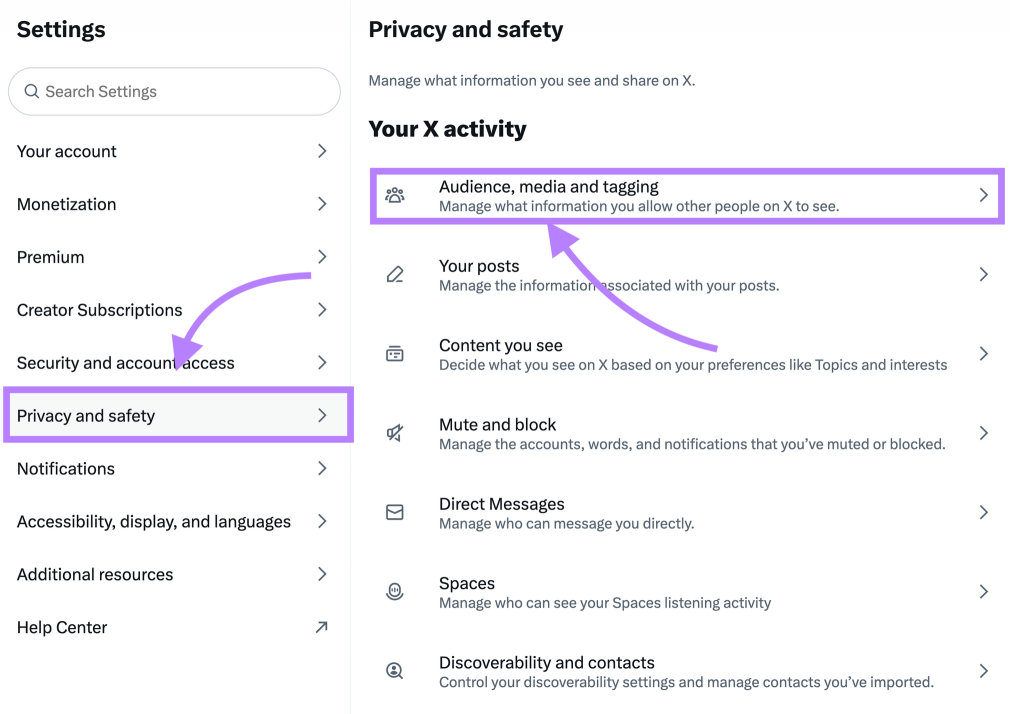
Then click or unclick the checkbox beside “Protect your posts” and “Protect your videos.”
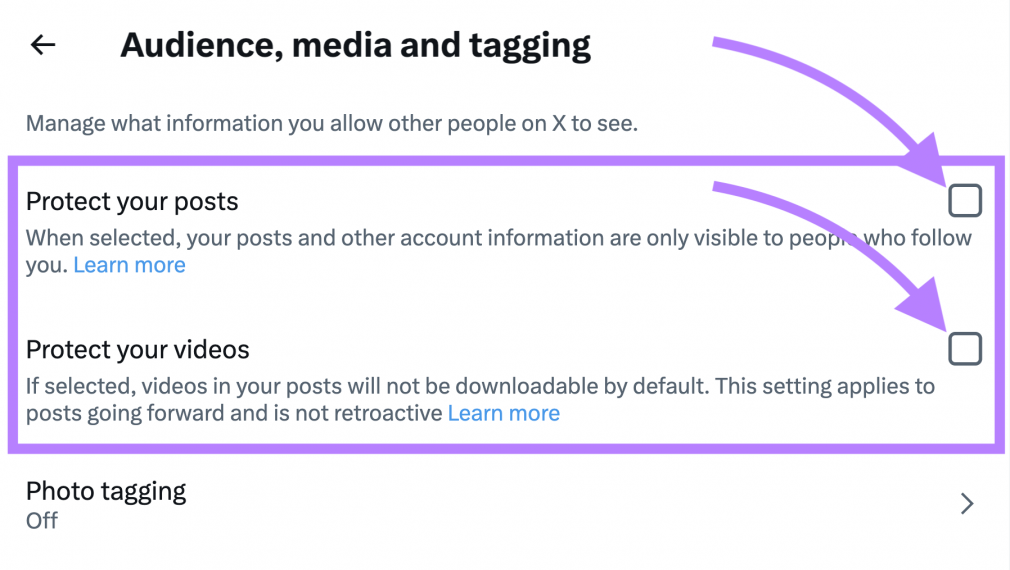
You can also make it easier for people to privately message you for customer service reasons. By going back to your “Privacy and safety” settings. And clicking on “Direct messages.”
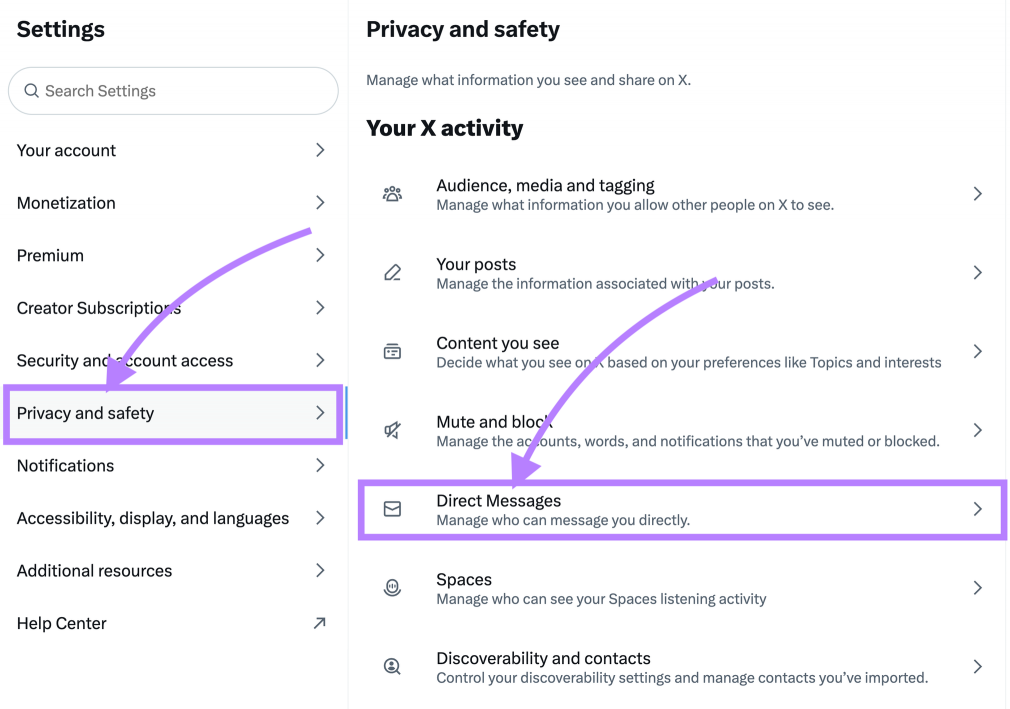
From there, you can configure who can message you under “Allow message requests from.” And even filter out low-quality messages.
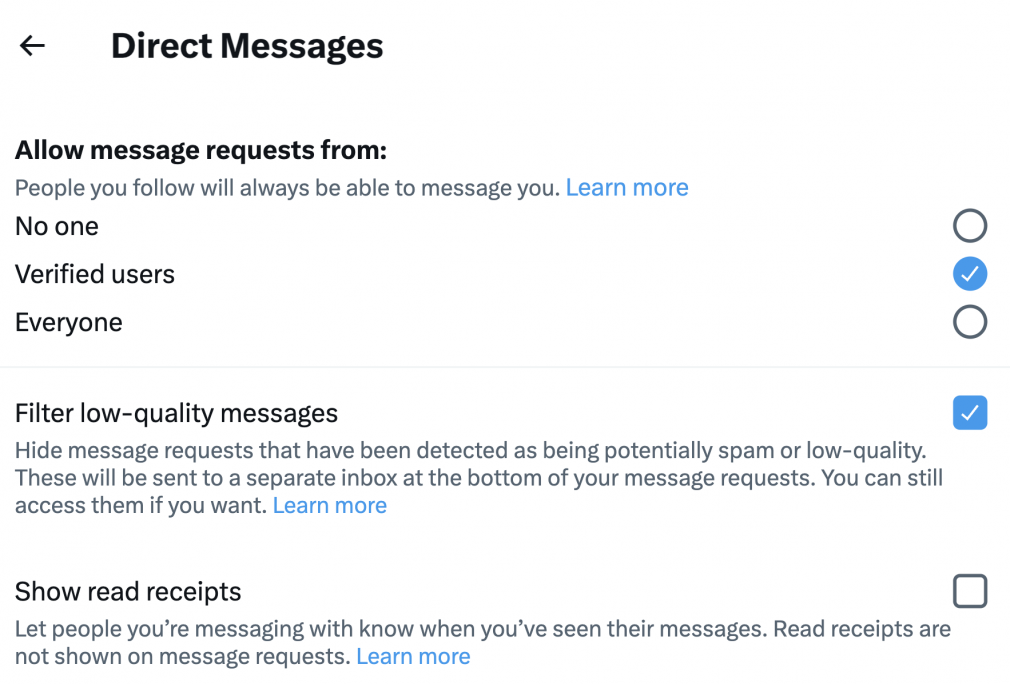
Remember to review privacy settings on all your social media accounts. If you need help, check out each platform’s support pages.
5. Post High-Quality Content
The key to success on any social media platform is consistently posting high-quality content your target audience finds helpful, interesting, and/or entertaining.
So, strategically plan your social content to earn followers and turn them into loyal customers. Here’s how:
Create a Posting Strategy and Schedule
Developing a posting strategy and schedule helps you save time and stay on track toward your goals.
To start, list the content formats available on your chosen platforms. This will help you brainstorm good ideas.
For Instagram, your list might look like this:
- Reels (videos up to 90 seconds with an aspect ratio of 9:16)
- Photos (aspect ratio between 1.91:1 and 4:5)
- Carousels (up to 10 videos and photos in a single post)
- Stories (photos and videos that disappear after 24 hours)
Next, come up with the types of content you could create for each format. Such as case studies, tutorials, or product demos. (Get more ideas from this list of social content types.)
Narrow it down to the best ideas by considering why your audience will find that content valuable and how you’ll create it.
Keep your notes together in a document.
Let’s say you’re doing social media marketing management for the camera brand GoPro. The start of your Instagram strategy might look like this:
|
Format |
What |
Why |
How |
|
Photo |
Customer photo |
Inspire |
Ask customers to share photos using #GoPro |
|
Reel |
Extreme sports videos |
Entertain |
Sponsor extreme sports athletes |
|
Carousel |
Top tips |
Educate |
Use image editing software |
Here’s an example of a resulting post:
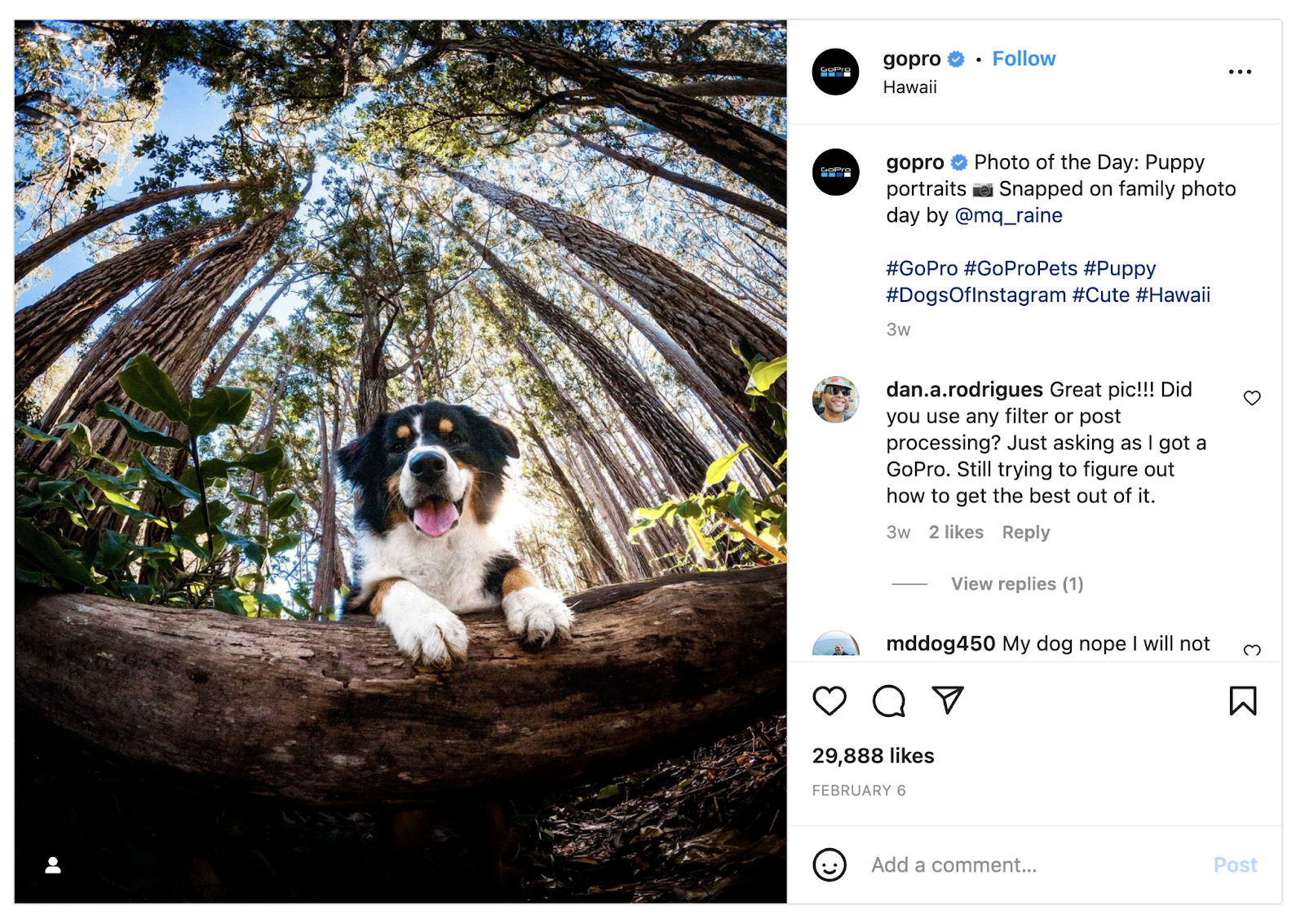
To find out what content performs best in your niche, try Social Tracker (part of Semrush Social).
The “Top Content by Channel” section showcases posts with the best engagement. (From competitors’ profiles and your own.)
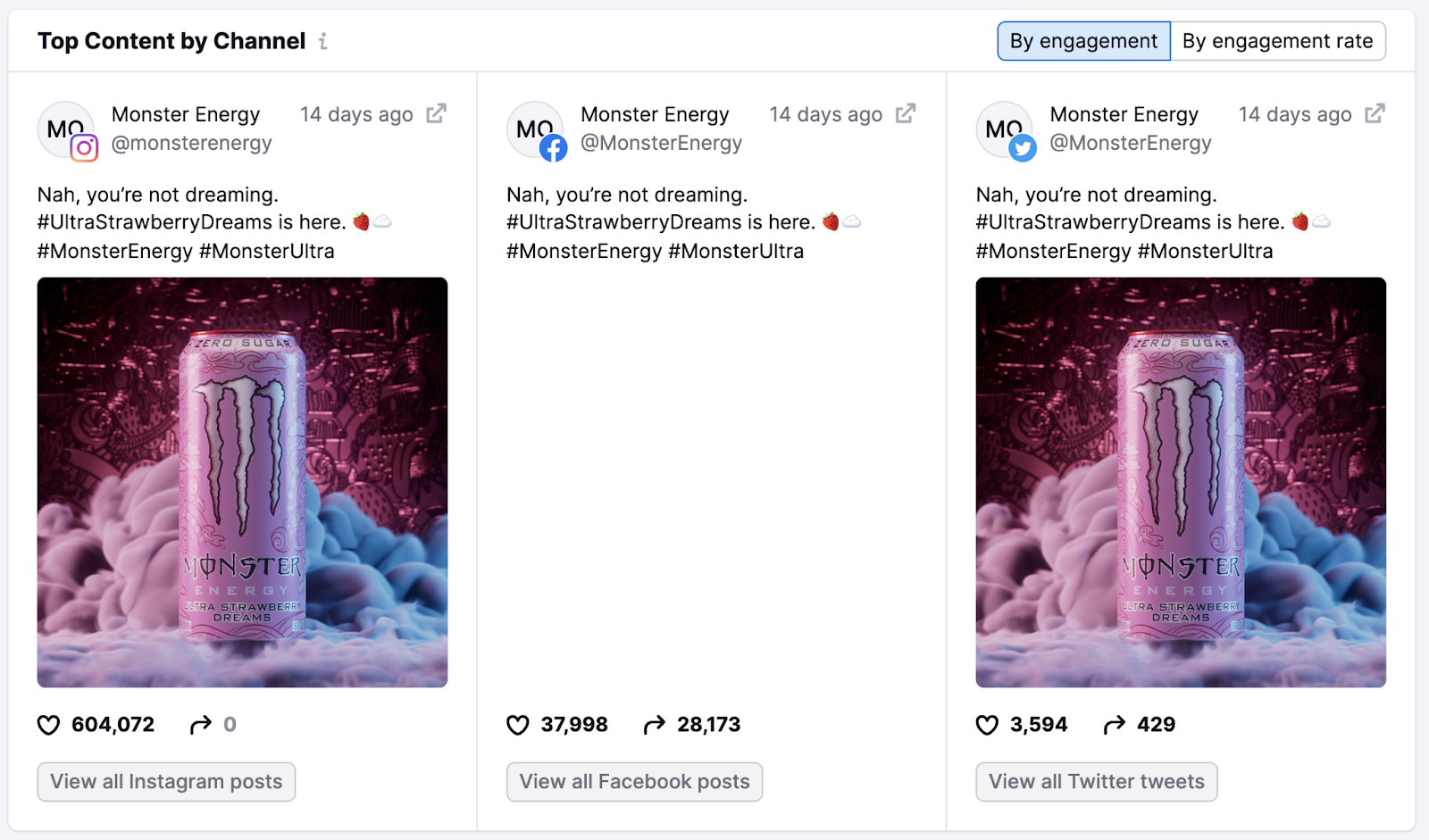
Next, decide how often to post on each platform. And at what times.
Go to the “Activity” tab for relevant social media platforms in Social Tracker to find out when your competitors post. And how engagement varies by day.
And think about key points in your target audience’s day. For example, professionals might check LinkedIn before they start work for the day.
Set Up a Social Media Content Calendar
Creating and scheduling content in advance makes it easier to accomplish the following:
- Prepare for upcoming events like marketing campaigns and public holidays
- Maintain a consistent posting schedule
- Post a variety of content
It also gives social media managers more time to focus on community engagement each day.
The best way to stay organized is to use a social media content calendar. Which lays out what you’ll post and when.
Our free social media calendar template includes the following columns:
|
Channel |
The social media platform you’ll post on |
|
Day |
The day of the week (to match up with the date) |
|
Status |
Whether your content is planned, in progress, scheduled, or published |
|
Date |
The publishing date |
|
Time |
The publishing time |
|
Post Topic/Type |
The post type and topic |
|
Copy |
The text that will be used in your post |
|
Visual Type |
The specific visuals (e.g., GIFs, videos, and still images) |
|
Visual (Drive Link) |
Links to your visuals once you’ve created them |
|
Link to Assets |
Links to any related assets, such as blog posts or products |
|
Link to Published Post |
The post URL once it’s published |
Once you have your template copy, populate the calendar with ideas.
Try to use a variety of content types from your social strategy. And take upcoming events into account.
Let’s say you wanted to share GIFs and New Year’s Day is coming up. You could create an animated “Happy New Year” greeting for your followers.
Create Your Posts
Next, bring your ideas to life.
Use AI Social Content Generator to quickly create engaging posts—including videos, images, and carousels—for various social media platforms.
Open the app and set up your account by providing details about your brand.
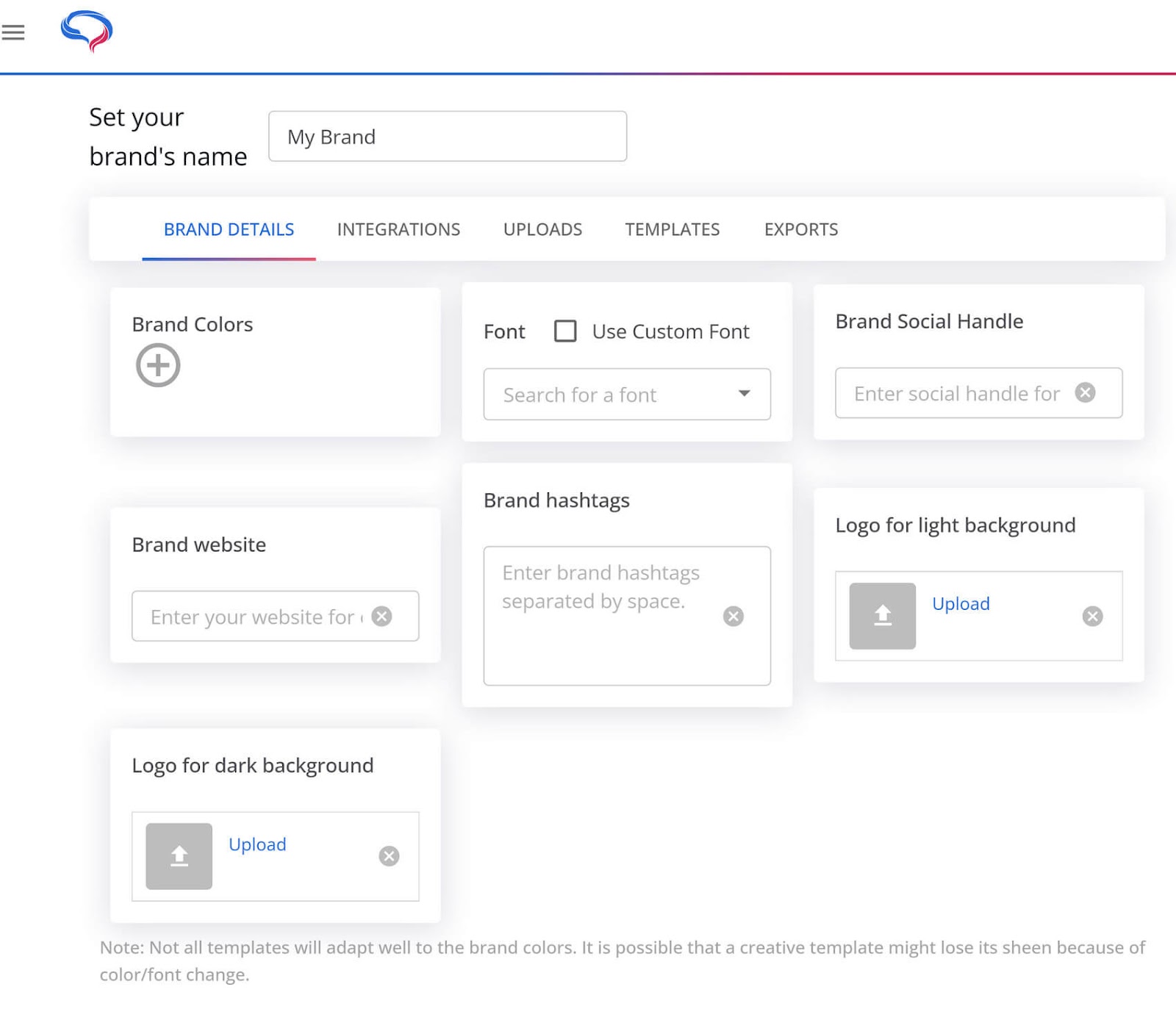
Once done, select “Text to Post” as the type of post you want to create.
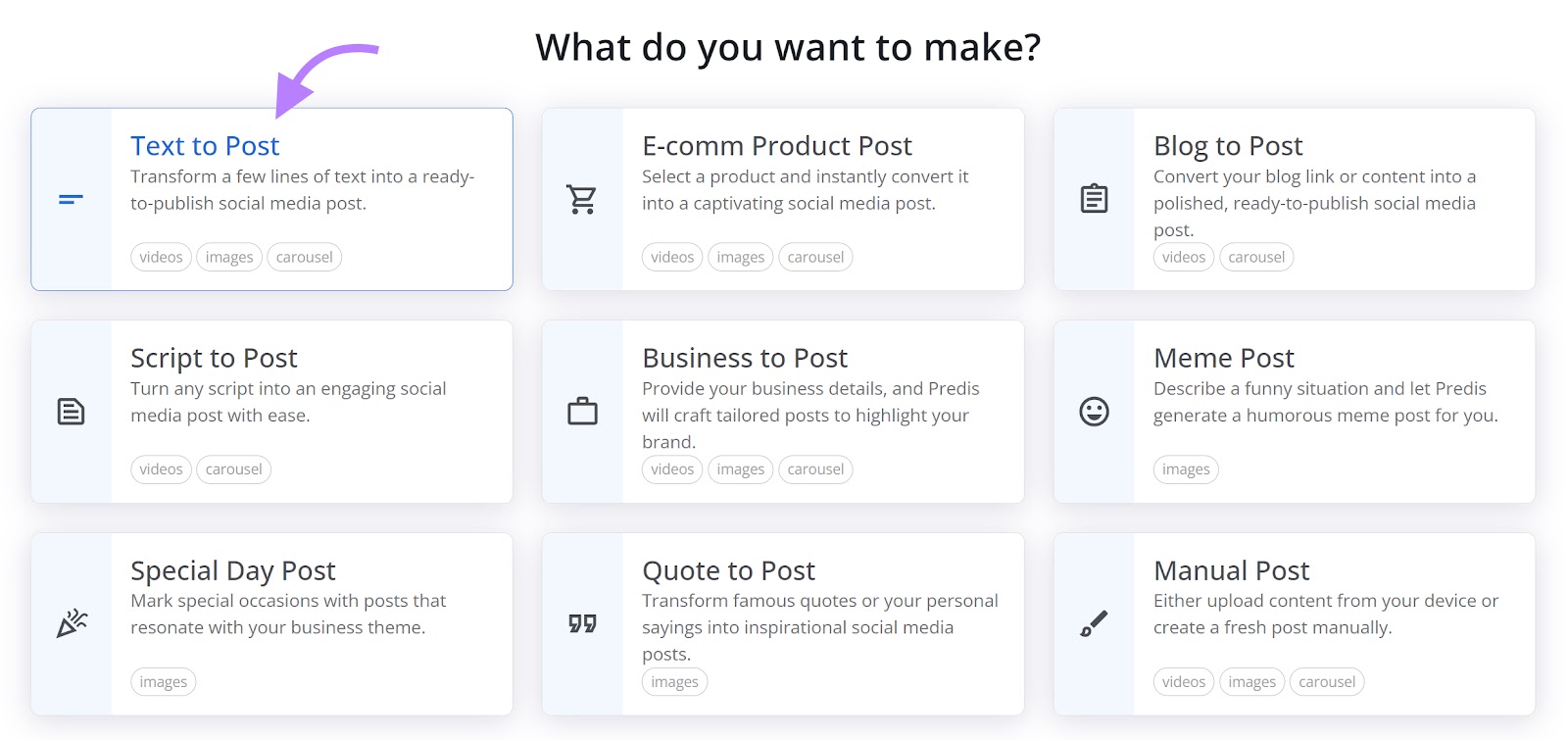
Add the topic you want to focus on. And make the prompt detailed to ensure the best possible output.
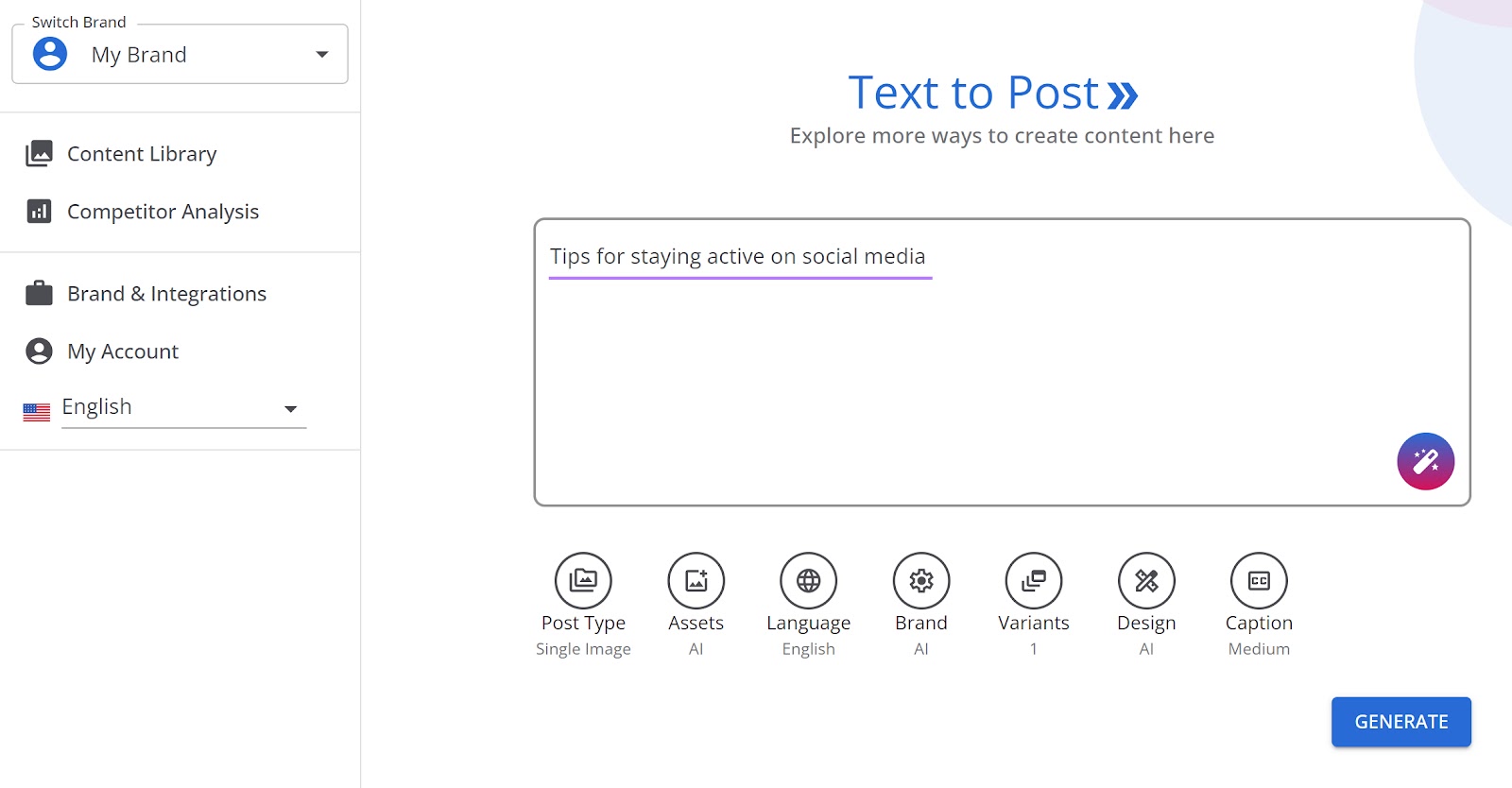
Next, select the type of post you need, the input and output language, and choose your own assets or let the AI do it for you.
Once you’re done, click “Generate.”
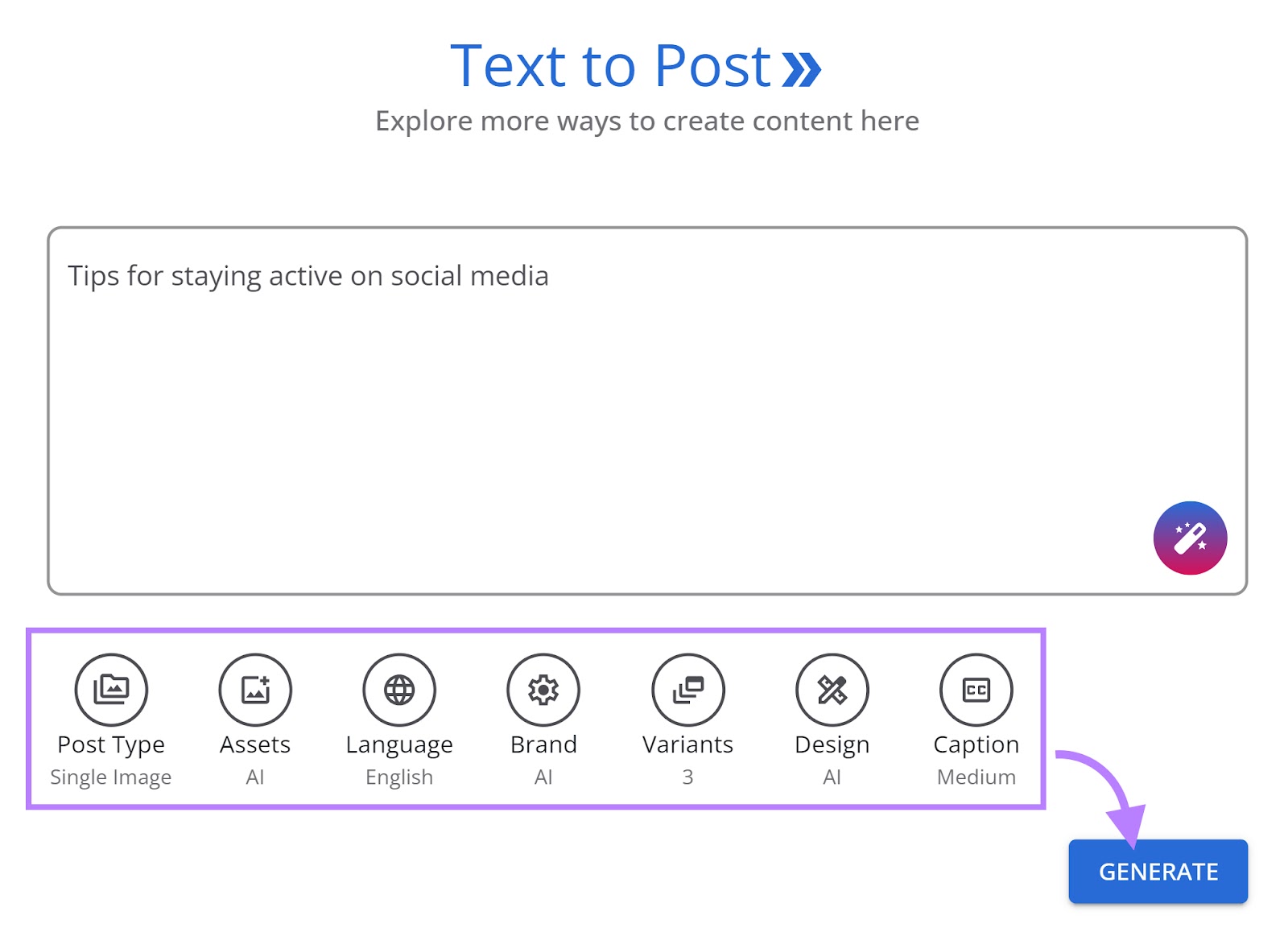
The tool will generate your social media posts. And they’ll be stored in the “Content Library.”
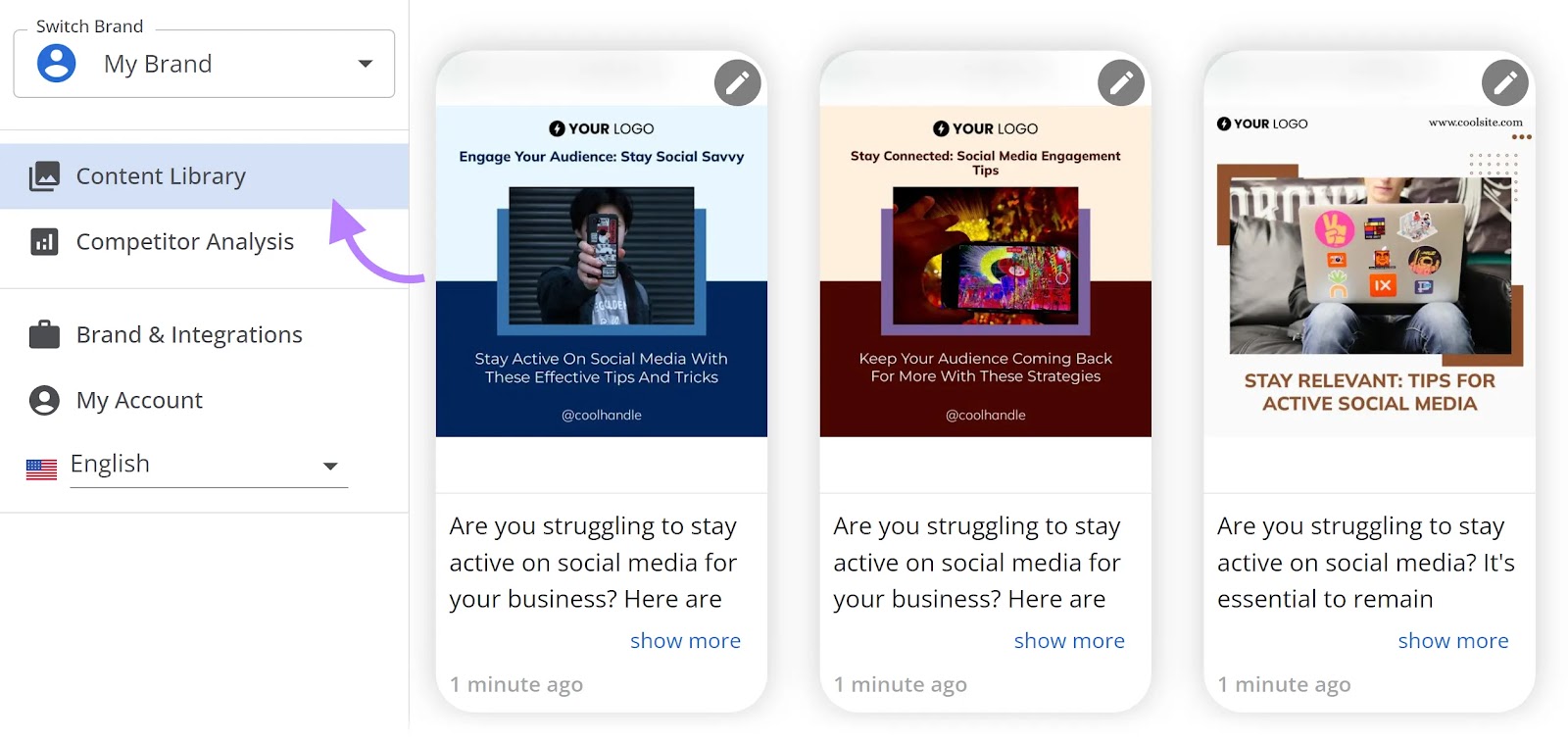
Once your posts are ready, the final step is scheduling them.
Semrush Social’s Social Poster tool allows you to simultaneously schedule posts on up to six social media platforms: Facebook, X, Instagram, Pinterest, LinkedIn, and Google Business Profile. (Google Business Profile isn’t strictly a social media site. But you can post updates to your profile.)
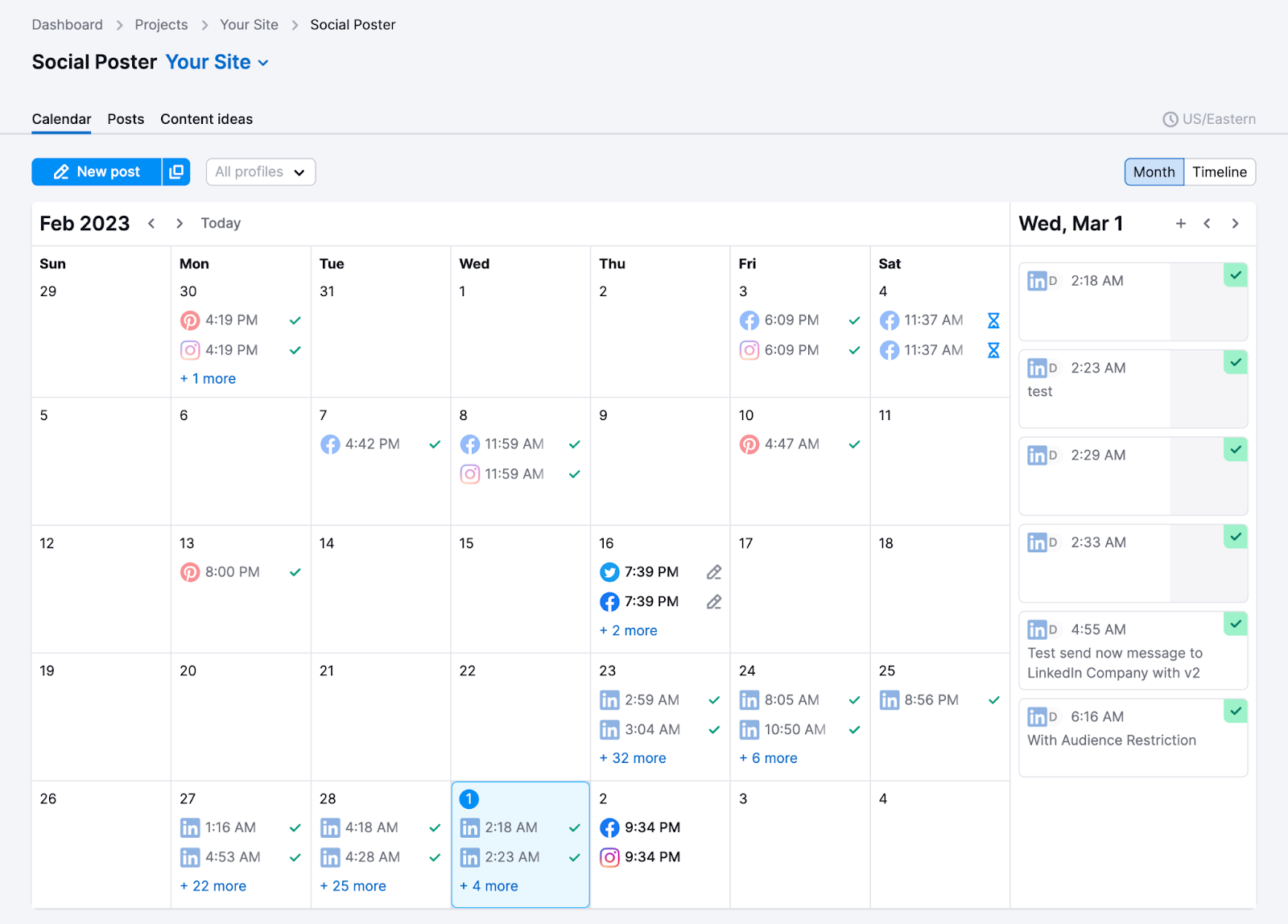
Just choose the appropriate platform(s) for your post, add your content, and click “Schedule” to choose when the post(s) should publish.
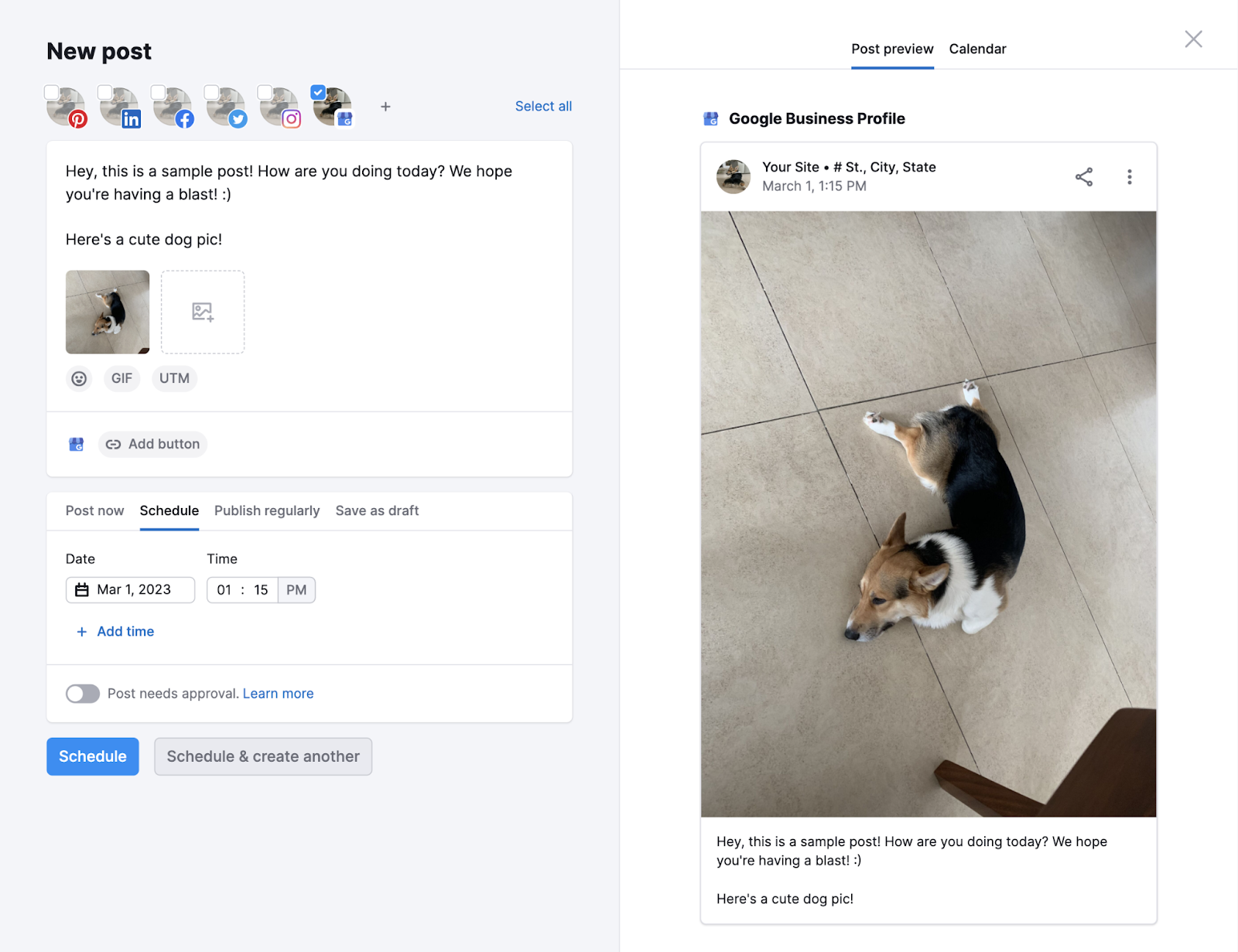
6. Engage with Your Audience
In addition to scheduling content, monitor activity in your niche using social media management platforms to identify conversations you can be a part of. And engage with trends that can boost your visibility.
Here are a few ways to engage with your followers:
Monitor Brand Mentions
You should know when people are talking to (or about) your brand. So you can respond effectively and make adjustments to your strategy.
This is called “social listening.”
To get alerts when someone addresses your brand directly, use the Social Inbox tool in Semrush Social to see Facebook, Instagram, and LinkedIn mentions in one place.
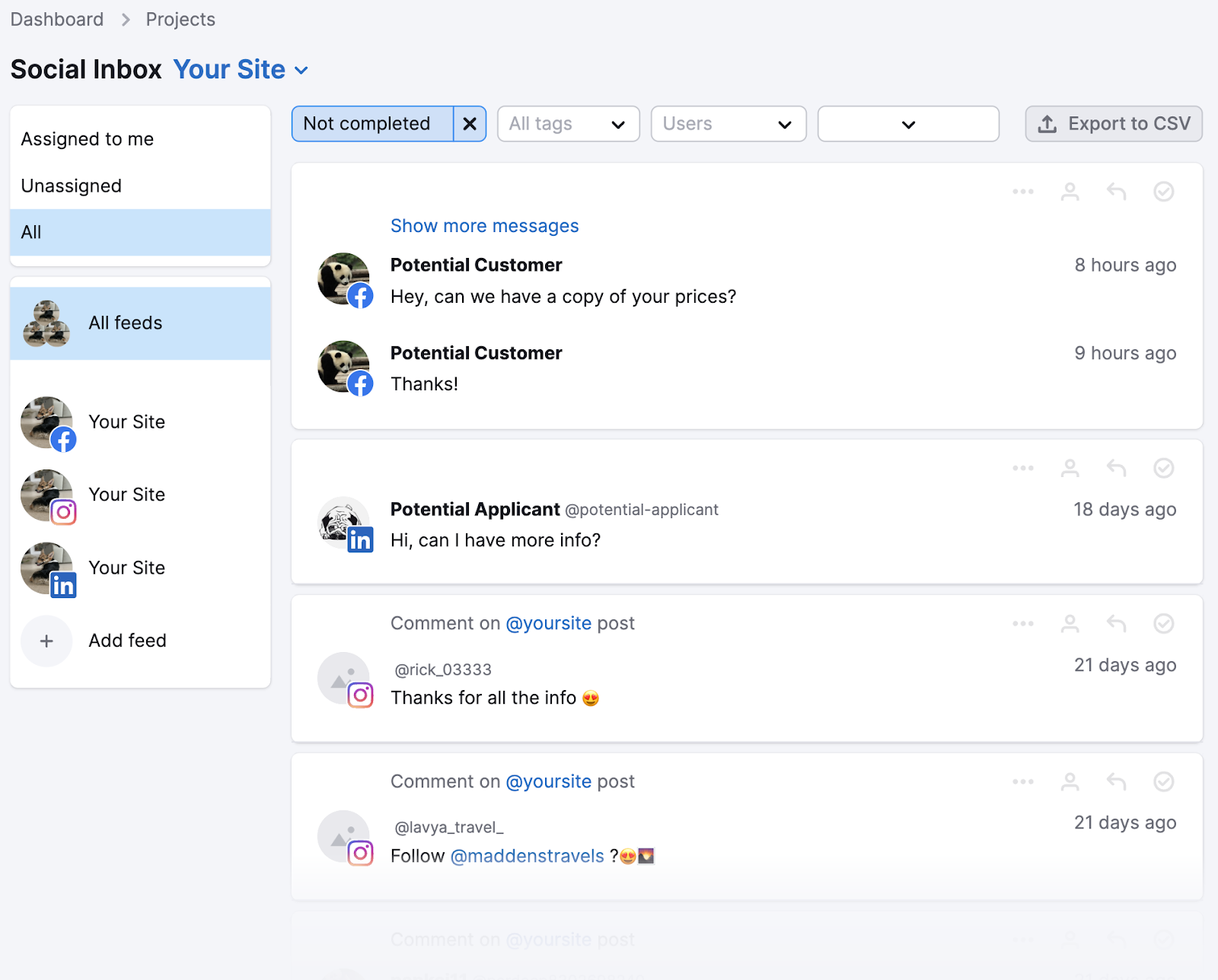
You can even send responses here. It’s an efficient way to manage multiple accounts.
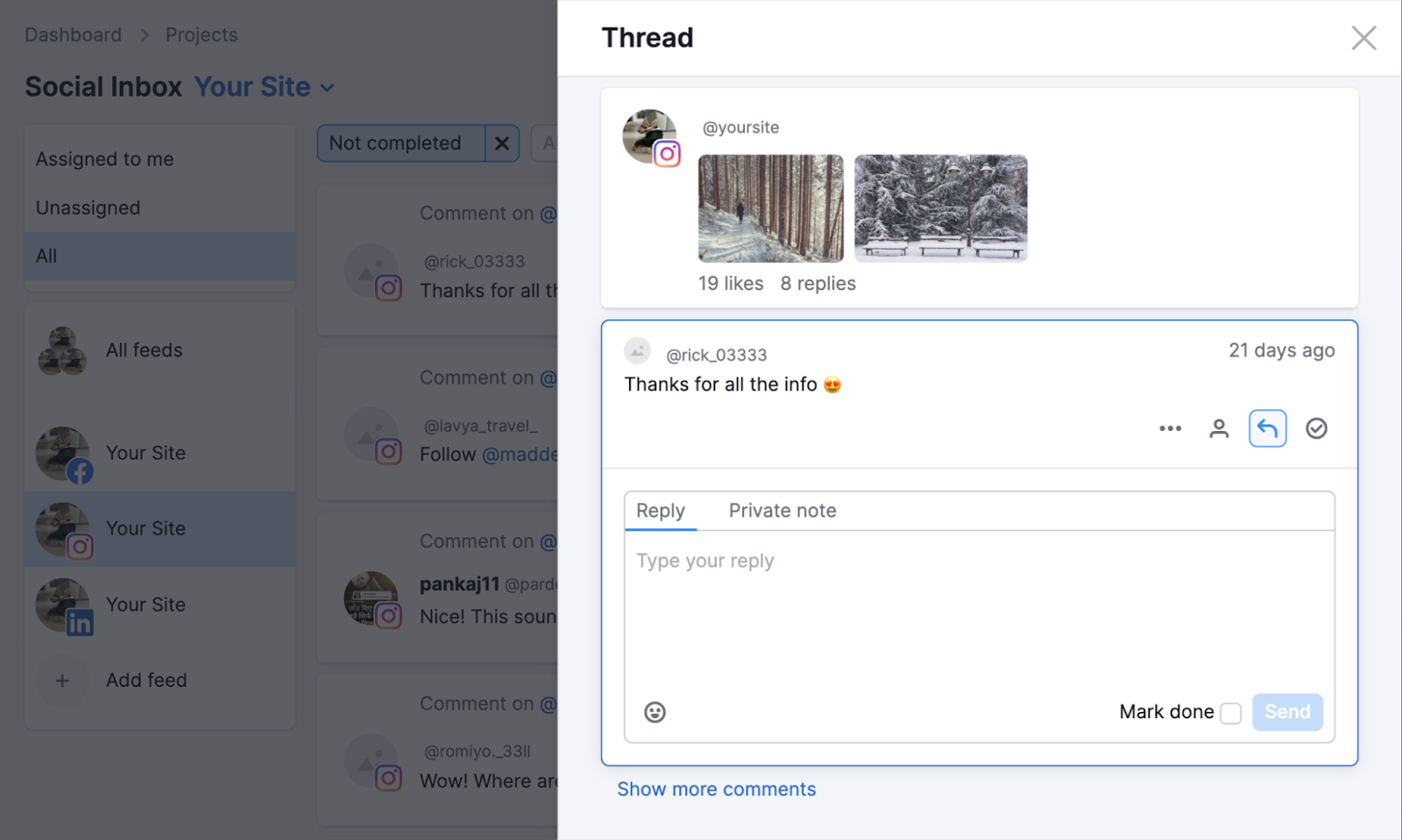
You can also switch on notifications in your individual social media accounts for the following:
- Tags: Someone tagged your @handle in a post or comment
- Replies: Someone replied to your post or comment
- Direct messages: Someone messaged you privately
- Comments: Someone commented on your post
- Reactions: Someone reacted (e.g., “Liked”) to your post or comment
And anything else that’s relevant on the platform.
To know when someone mentions your brand without tagging, get automatic updates with the Media Monitoring app.
For example, here’s a report for Amazon that includes brand mentions on TikTok:
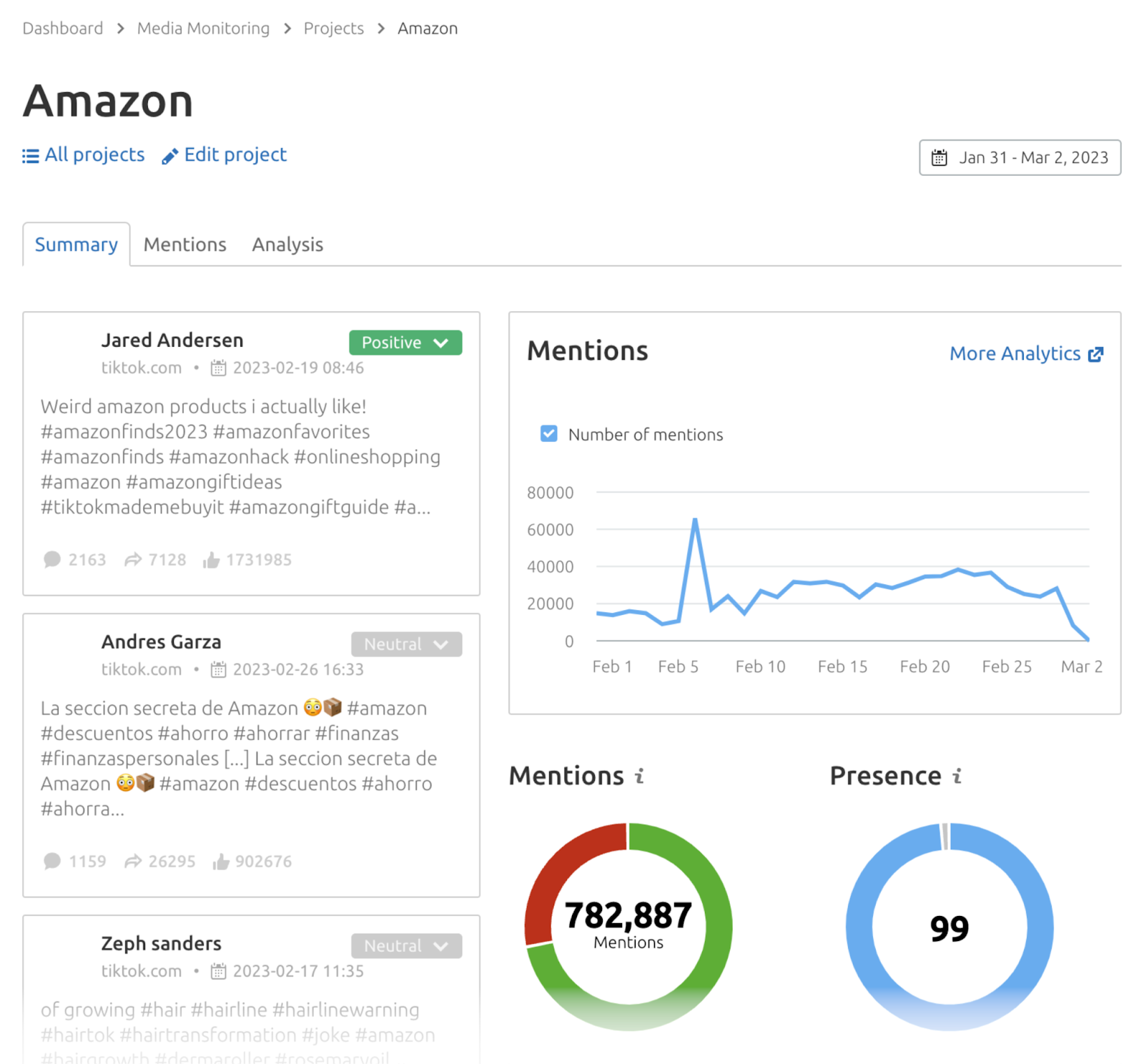
The app also indicates whether mentions have positive, negative, or neutral sentiment. Which helps you determine whether to intervene—and how.
Always respond to negative comments first. Addressing issues quickly, politely, and effectively can prevent them from escalating.
Resolve private and complex matters via direct message (or another private channel).
If someone posts something positive, responding (or reacting) can strengthen your relationship with them. And draw others’ attention to their praise.
Like Robinhood did here:
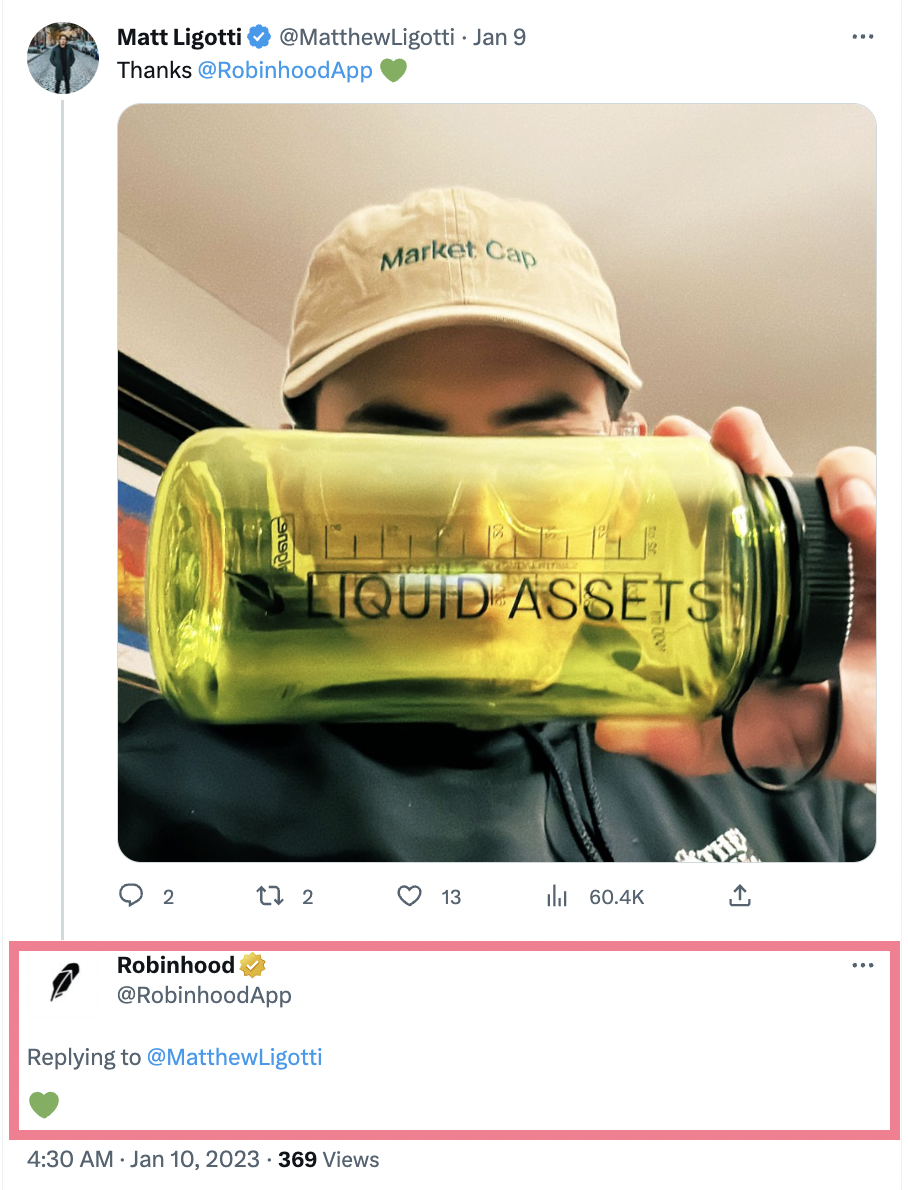
Join and Start Conversations
To keep track of conversations in your niche, follow competitors and influencers. Who you can find by searching relevant keywords on each platform.
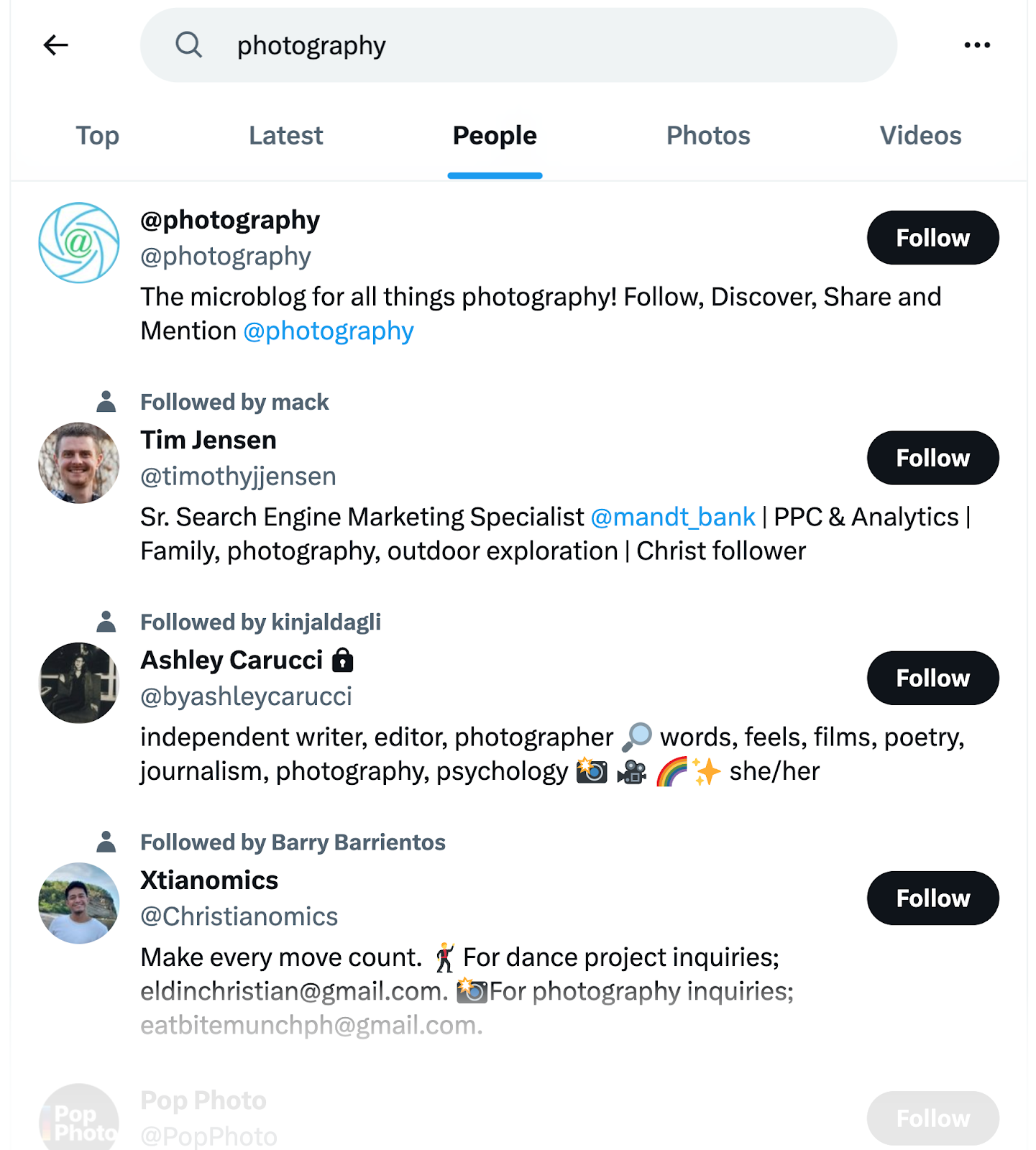
And subscribe to relevant topics or hashtags, if possible.
For example, go to “More” > “Topics” on X. And click the “+” icon on any topics you’re interested in.
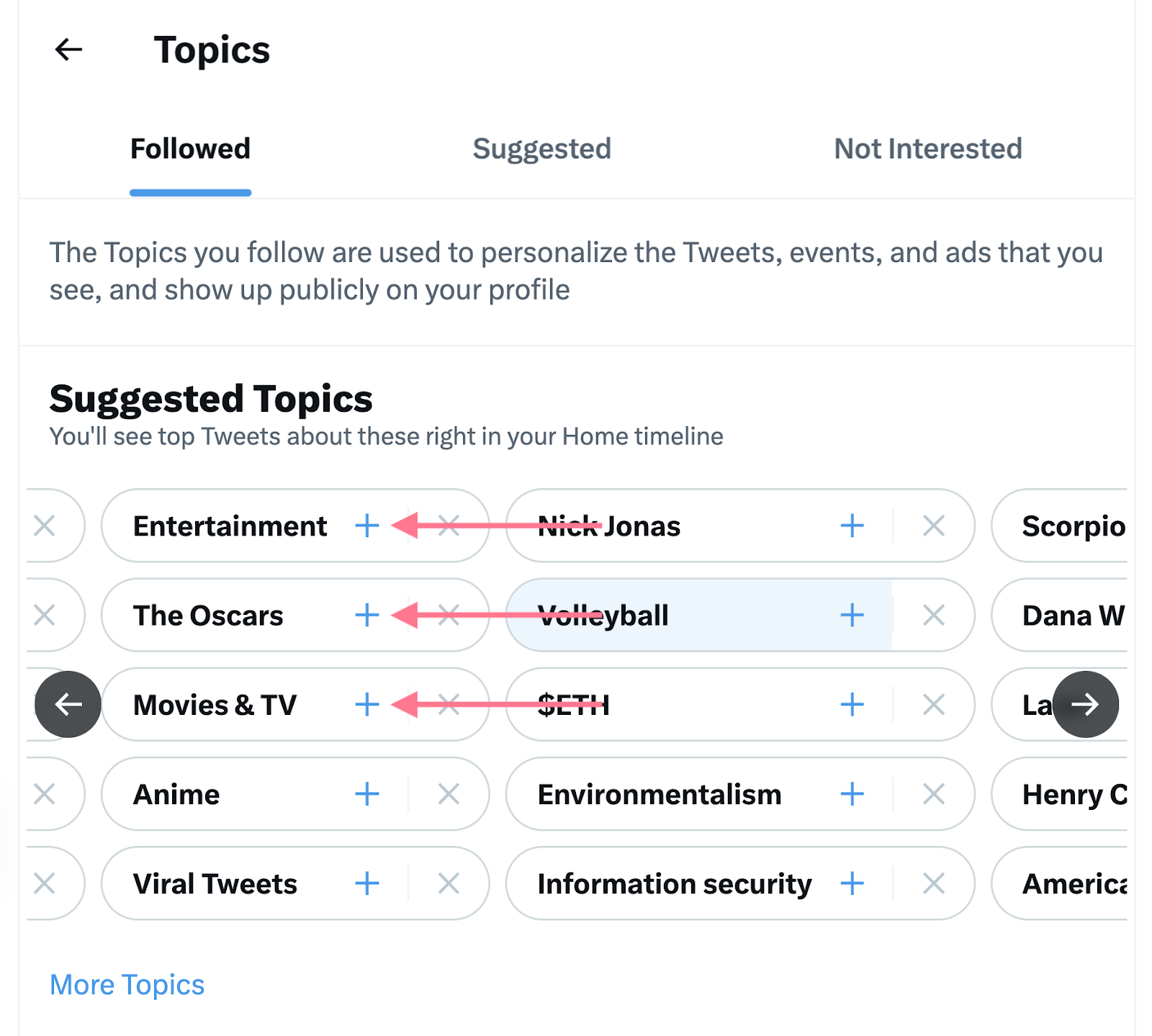
Then, take some time each day to identify major talking points (and popular posts) in your feed. And get involved when you can add value.
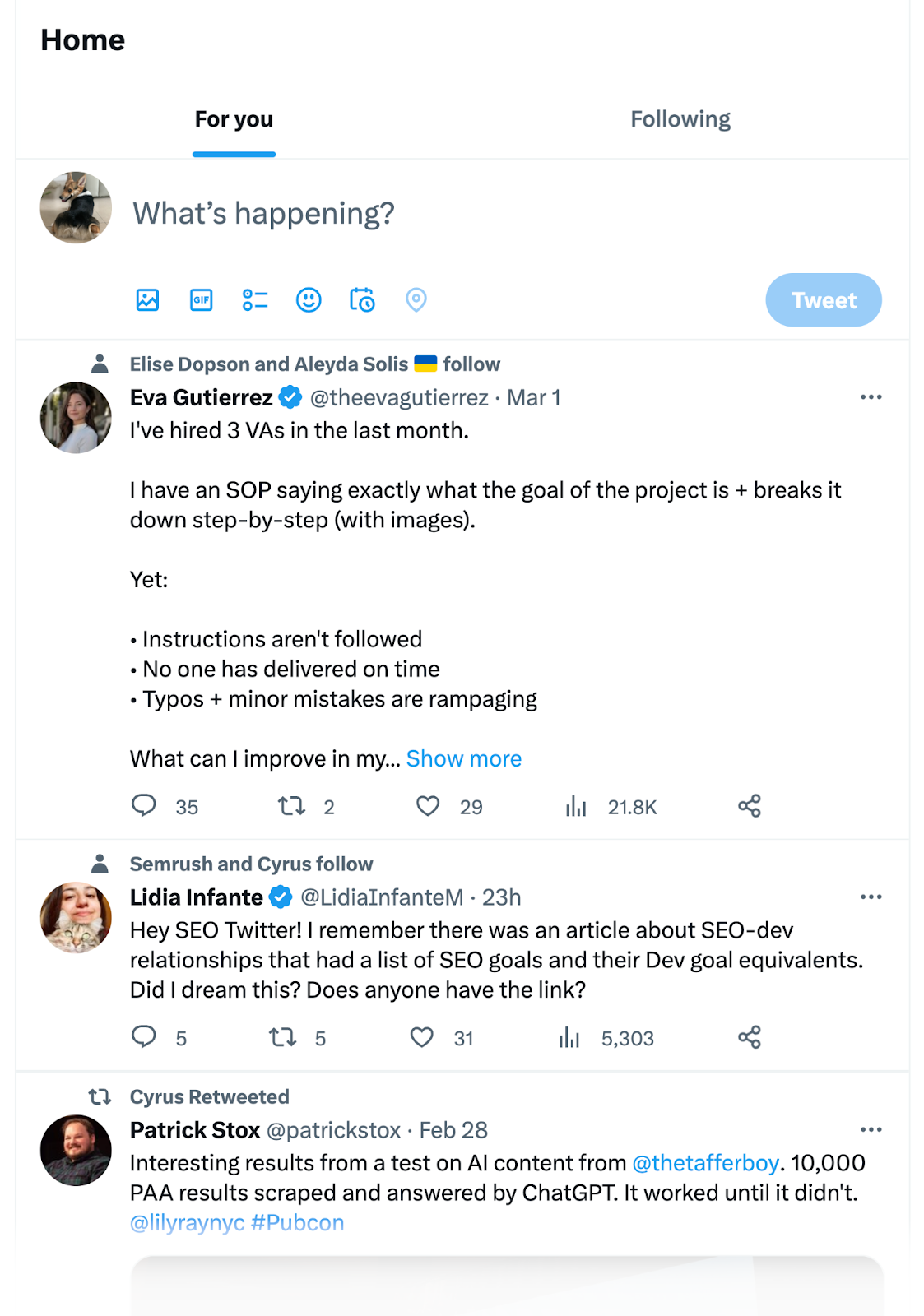
On TikTok, many brands comment on other users’ videos (especially those going viral). To gain exposure and build a personable brand image.
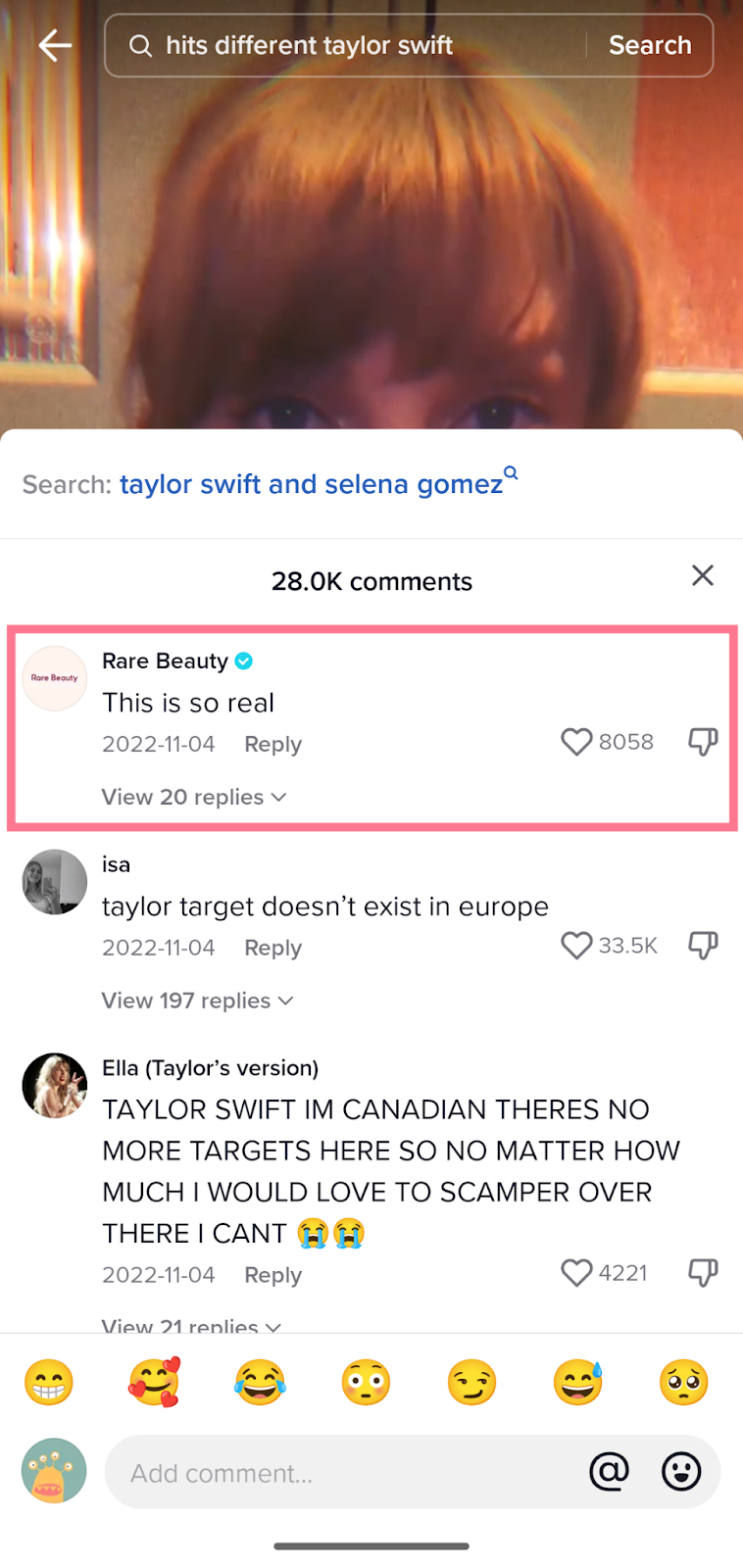
But start conversations, too.
Simple questions and prompts can boost engagement and get people talking. And references to trending topics show you’re part of the community.
On TikTok, brands tap into trending sounds and memes to generate engagement. The site’s Creative Center can help you find what’s hot.
Amplify Others
Sharing someone else’s content makes them more likely to engage with your post. Which can get you in front of their audience to grow brand awareness.
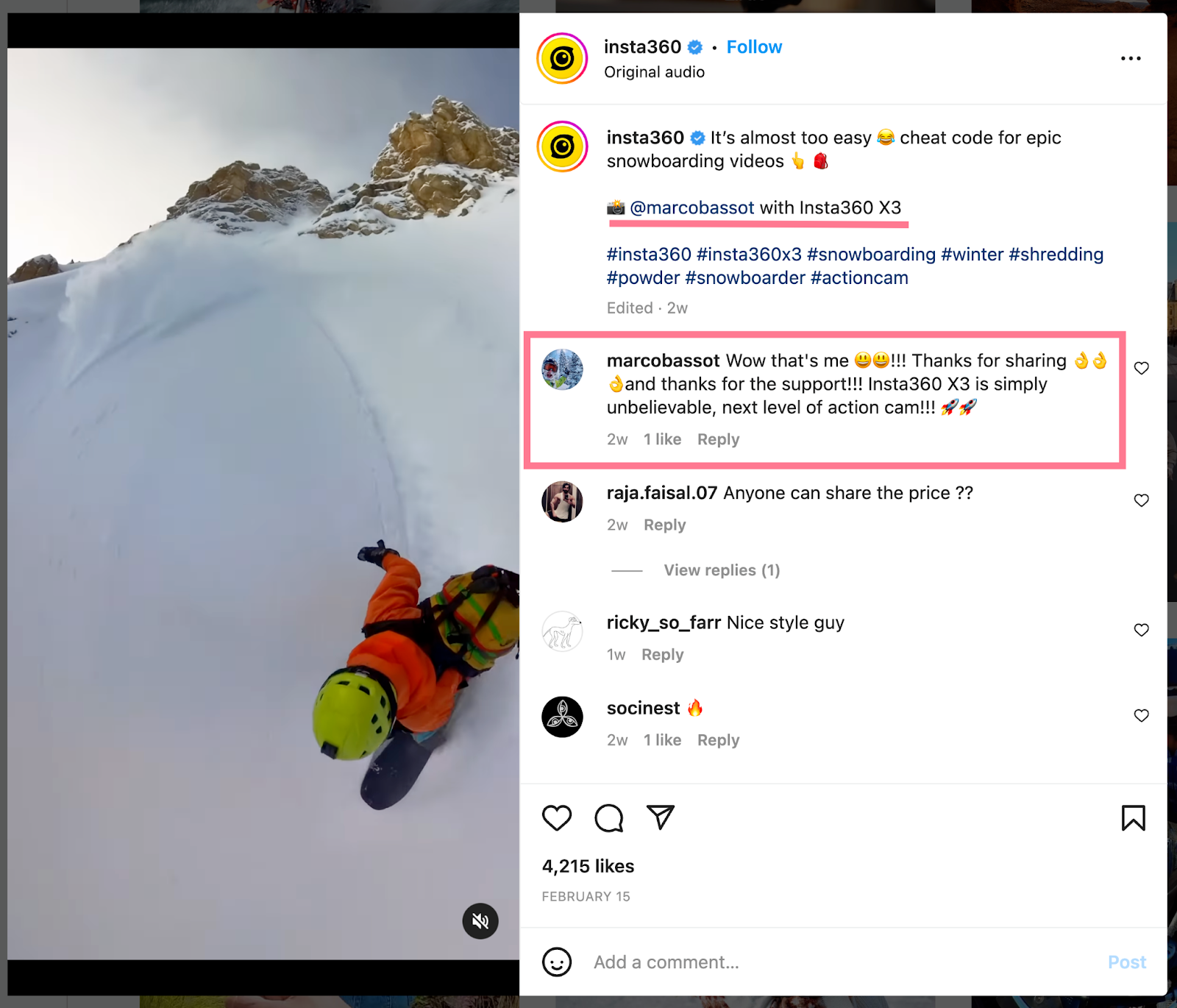
They might even return the favor at a later date. By sharing your content from their account.
For the best results, amplify influencers in your niche. Meaning people with a target audience you want to tap into.
Repost their content alongside your commentary. Or, share content from elsewhere (e.g., blog posts) and tag the creator.
We recommend following these guidelines when amplifying someone else’s content:
- Share content from creators who make sense for your brand (i.e., creators in a similar niche or creators who directly mention your brand or product)
- Amplify a variety of creators
- Continue to dedicate most of your time and resources to producing original content
7. Expand Your Reach with Ads
Social media advertising allows you to reach a targeted audience beyond your organic followers on the platforms you’re already using. Putting you in front of more people who are likely to be interested in what you offer.
One simple way to get started is by boosting your regular social media posts.
Create a regular post. And then pay to “boost” its visibility in more people’s feeds. Which can help you achieve campaign goals with content you already have.
These “boosted” posts have a “Sponsored” or “Promoted” label to signify that they’re ads:
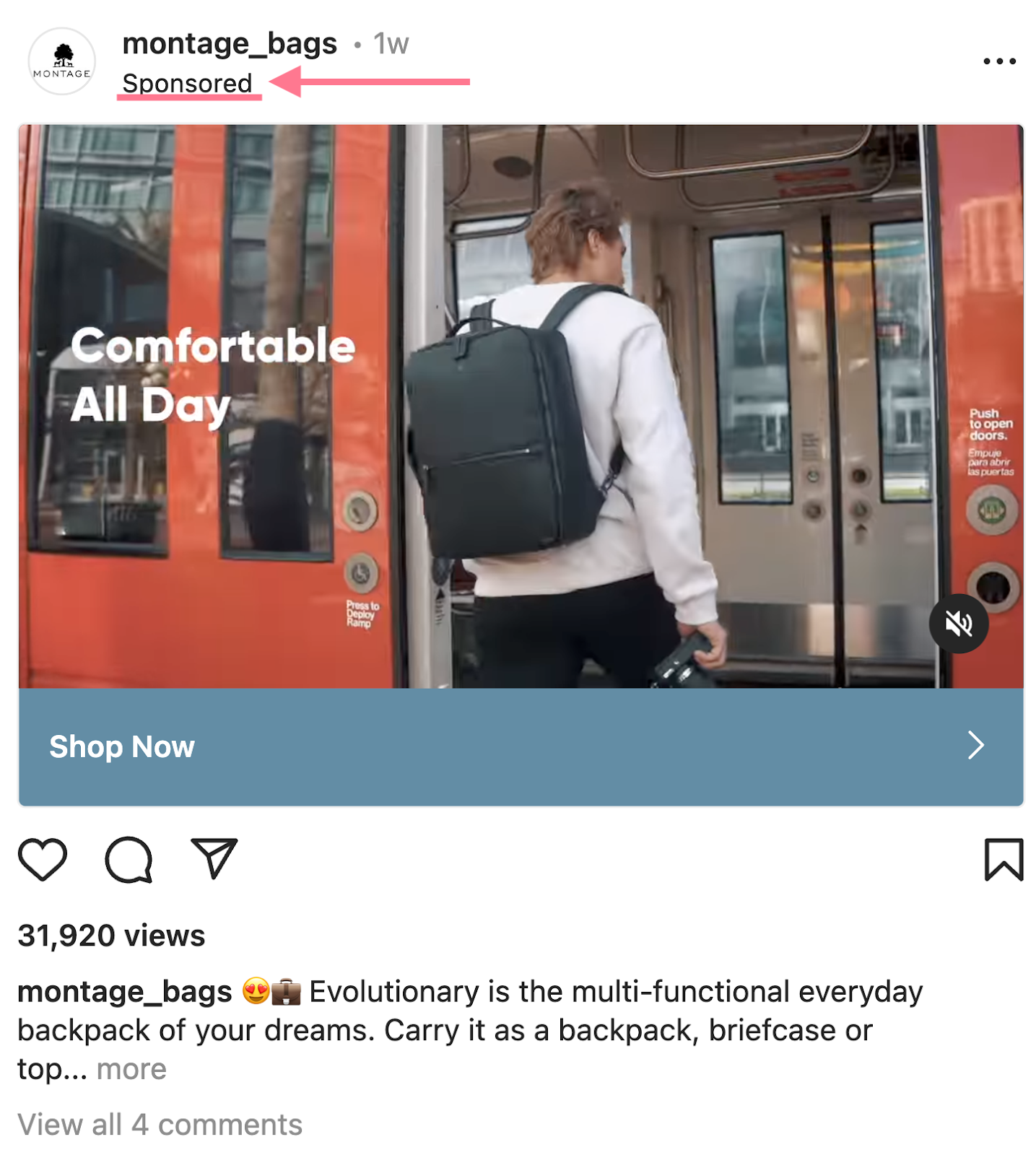
You can also create dedicated ads.
Before you get started, gain some inspiration from competitors’ campaigns using the AdClarity app. It shows you:
- Which platforms they’re advertising on
- Which ad formats they’re using
- How much they’re spending
- How many impressions they’re getting
- Which of their ads perform best
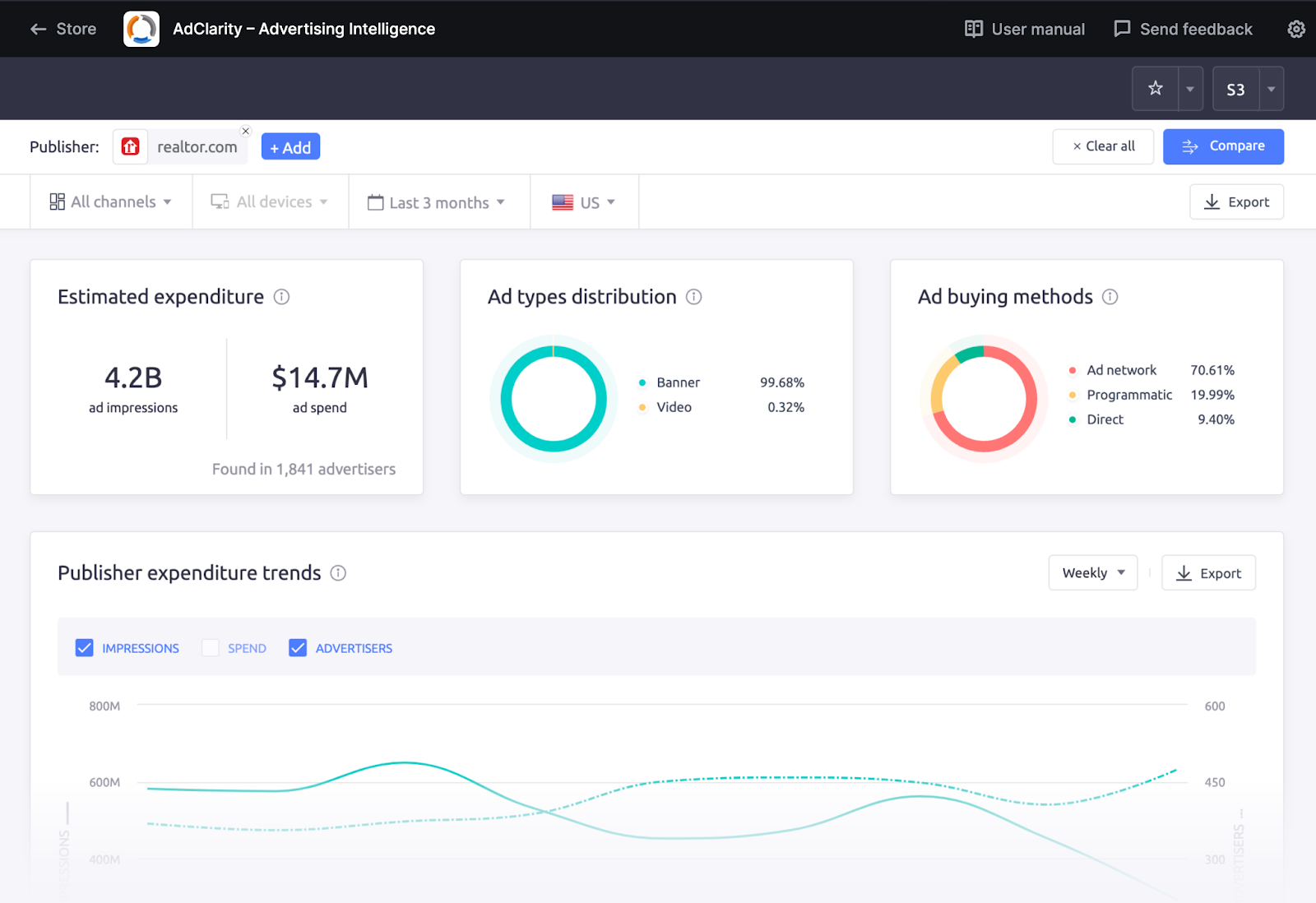
Use this information to inform your own campaigns.
Now, here’s an overview of some popular platforms and the format and targeting options for each:
Meta Ads
Facebook and Instagram offer a range of ad options:
- Image and video ads in users’ feeds and in stories
- Carousel ads with multiple images or videos
- Collection ads that showcase products
- Messenger ads that start conversations
- Augmented reality ads that allow people to “try on” products
You can target Meta ads based on demographics, interests, behaviors, and other attributes. You can also create lookalike audiences that include people who share characteristics with your existing customers.
X Ads
X offers several ad formats, including:
- Image and video ads
- Carousel ads with up to six images or videos
- Vertical video ads that take up the users’ full screen
- Collection ads that show a group of related offerings in a single view
X’s targeting options include keywords, interests, and behaviors. You can also target specific accounts’ followers or create custom audiences.
LinkedIn Ads
LinkedIn provides ad options like:
- Sponsored messaging sent directly to users’ inboxes
- Text and dynamic ads
- Video ads
- Event ads to promote your LinkedIn events
LinkedIn lets you target based on company, job, education, interests, and other attributes. You can also upload contact lists.
YouTube Ads
YouTube offers several video ad formats, like:
- Skippable and non-skippable in-stream ads that play before, during, or after a video
- Video discovery ads that appear in search results and next to related videos
- Bumper ads—six-second, non-skippable video ads
- Masthead ads that appear at the top of the YouTube homepage
You can target YouTube ads based on demographics, interests, and behaviors. You can also show ads to people who’ve interacted with your videos or YouTube channel.
TikTok Ads
TikTok offers several ad types, including:
- In-feed ads that appear in users’ “For You” feeds
- TopView ads that appear when users open the app
- Branded hashtag challenge ads that encourage user participation
- Branded effect ads that allow brands to create custom filters and lenses
TikTok’s targeting options include demographics, interests, behaviors, and devices. You can also create custom and lookalike audiences.
Pinterest Ads
Pinterest provides ad formats like:
- Static and video Pins that appear in users’ feeds and search results
- Carousel ads with multiple images
- Shopping ads that feature products
- App install ads
Pinterest allows targeting based on interests, keywords, demographics, and customer lists. You can also retarget people who’ve engaged with your pins or website.
Further reading: A Guide to the Best Advertising Platforms for Your Business
8. Collaborate with Influencers
Influencer marketing involves working with social media influencers to promote your brand.
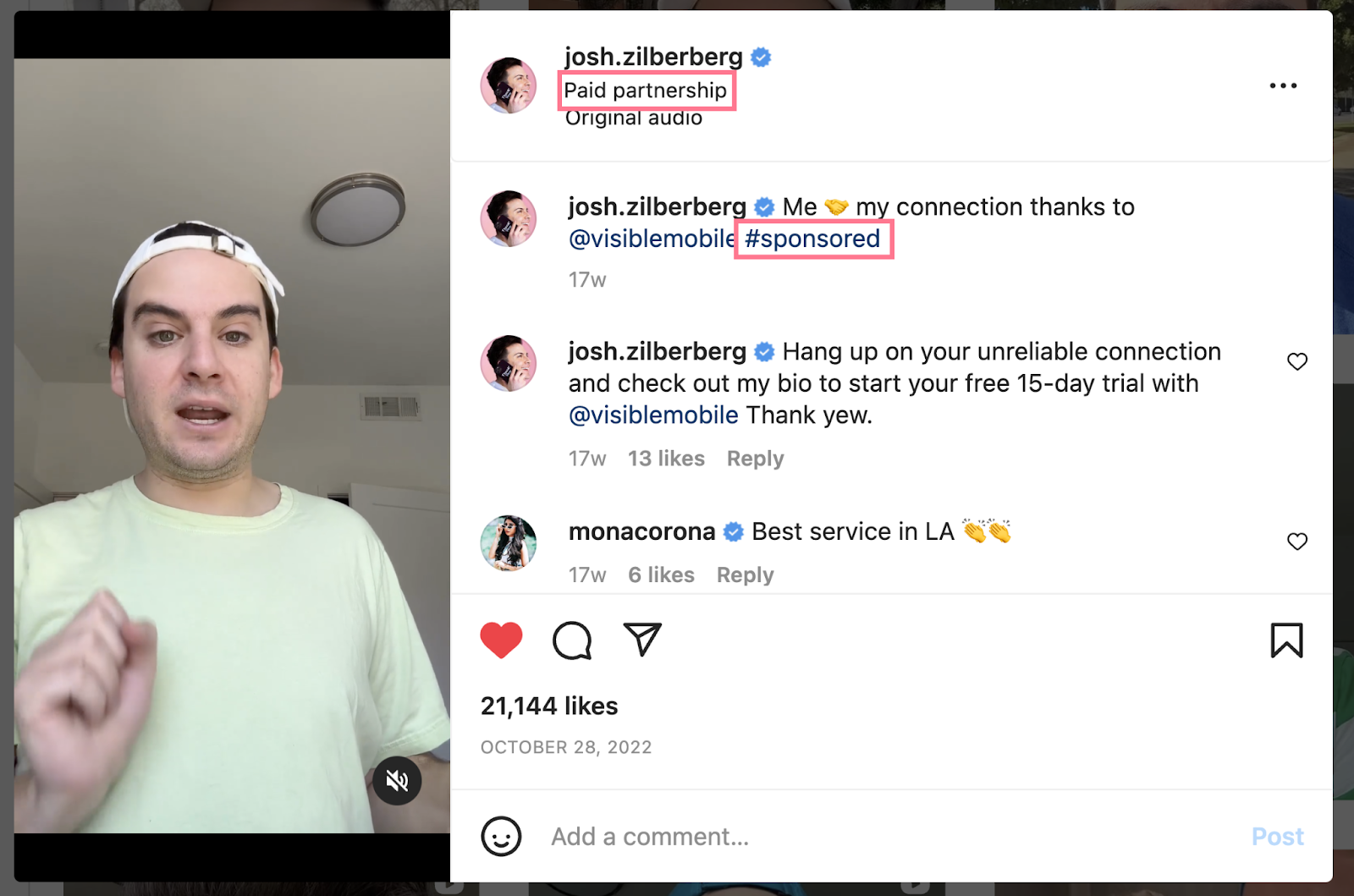
It allows you to tap into an established audience. And associate your brand with a popular personality.
Influencers fall into three categories:
- Micro-influencers have fewer than 100,000 followers. They’re great for targeted campaigns because they often have a strong connection with their audiences.
- Macro-influencers have between 100,000 to 1 million followers. They help increase brand awareness due to their larger audience size.
- Celebrities have over 1 million followers and can significantly boost your brand’s visibility. Although, they’re the most expensive to partner with.
Use the Influencer Analytics app to search for ideal influencers.
Open the tool, go to “Influencer Discovery,” and select the platform you want to focus on.
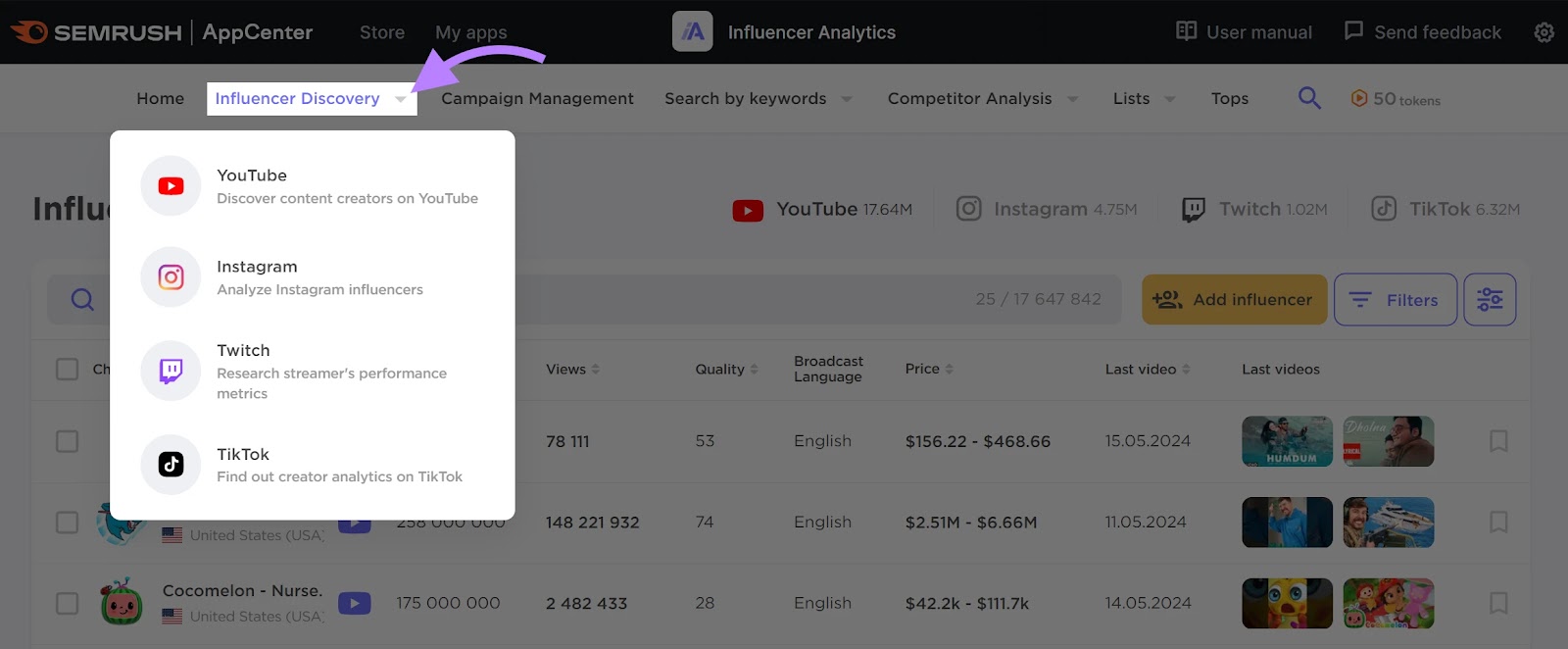
Next, use filters to narrow down the list of influencers based on your requirements and budget.
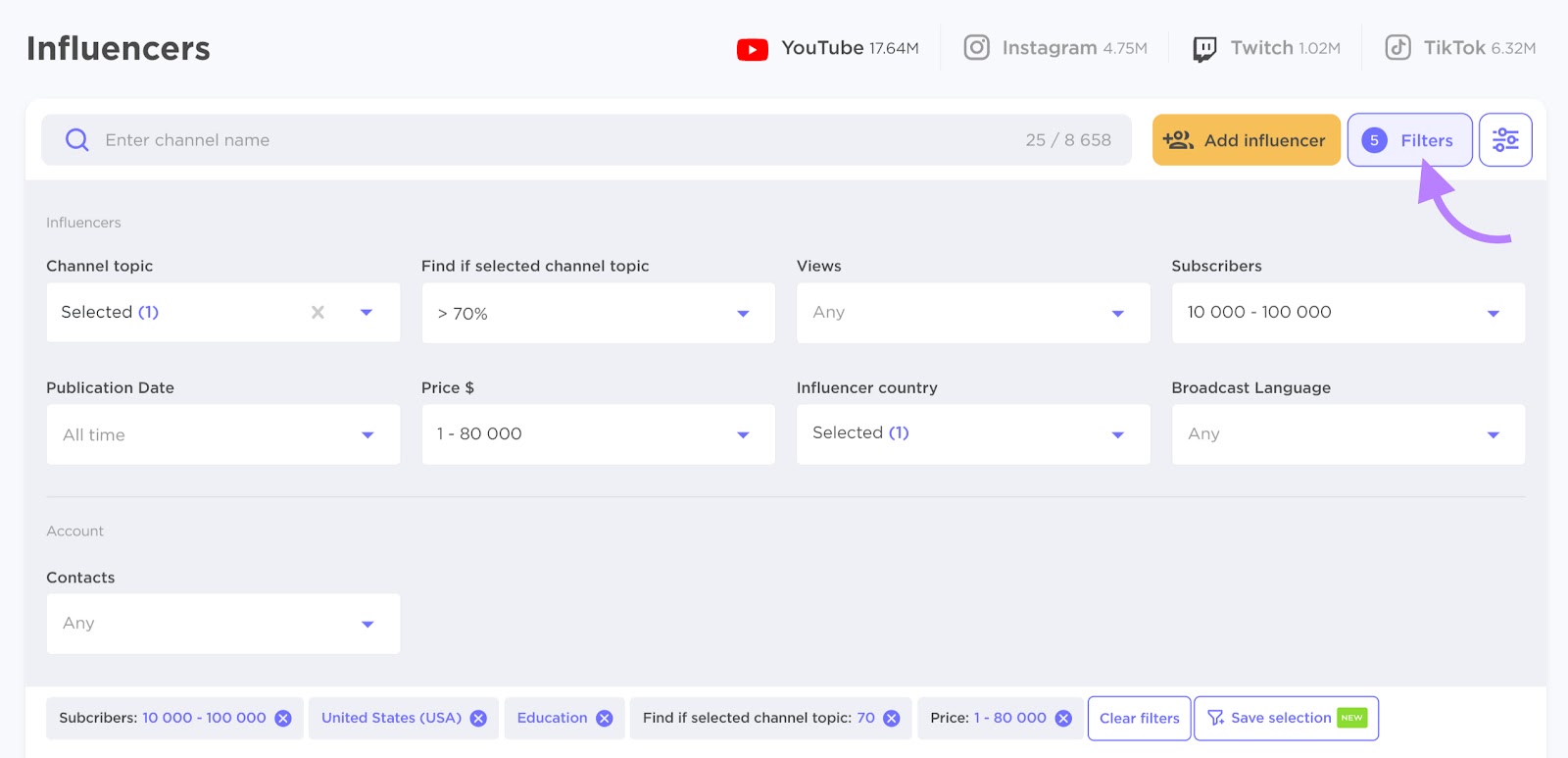
You’ll then get a list of results you can review.
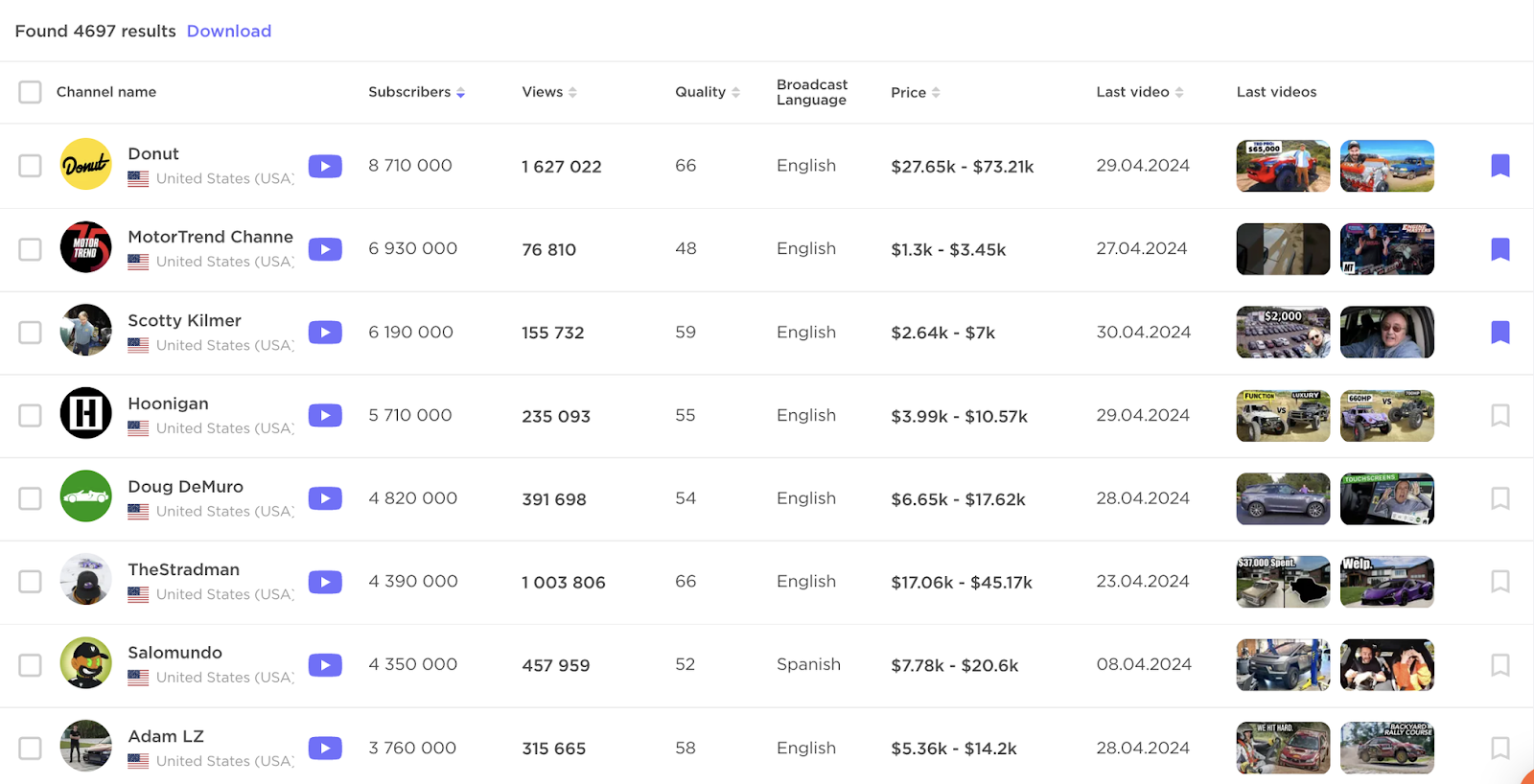
Click on an individual influencer’s profile for additional data. Including their contact details (if available).
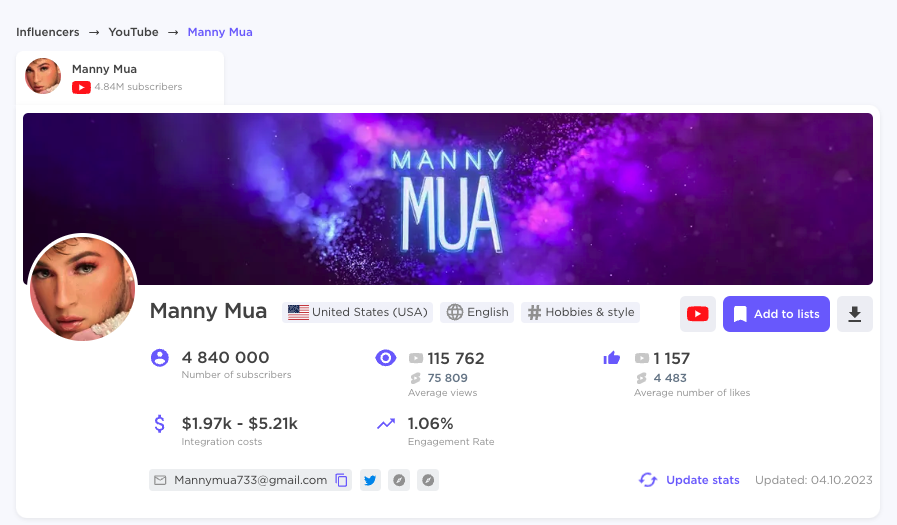
The app also has influencer recruitment, collaboration, and analytics tools to help you run your entire influencer marketing campaign.
Once you’ve identified the influencers to partner with, reach out to them with a proposal. Here are some common collaboration types you can go with:
- One-time sponsored posts: The influencer creates content featuring your product or service
- Contests and giveaways: The influencer promotes a contest or giveaway featuring your product or service
- Long-term ambassadorships: The influencer consistently promote your brand over an extended period of time
Micro-influencers are typically the most affordable, but some influencers are open to negotiation. Especially for long-term partnership.
Further reading: How to Find Influencers for Your Brand
9. Measure Your Results
Monitoring and analyzing social media results shows you what’s working and what isn’t. So you can improve your social media management and keep growing.
One key metric to monitor is audience size—the number of followers or subscribers you have on each platform.
View everything at a glance (including your competitors’ follower counts) in the Social Tracker tool within Semrush Social.
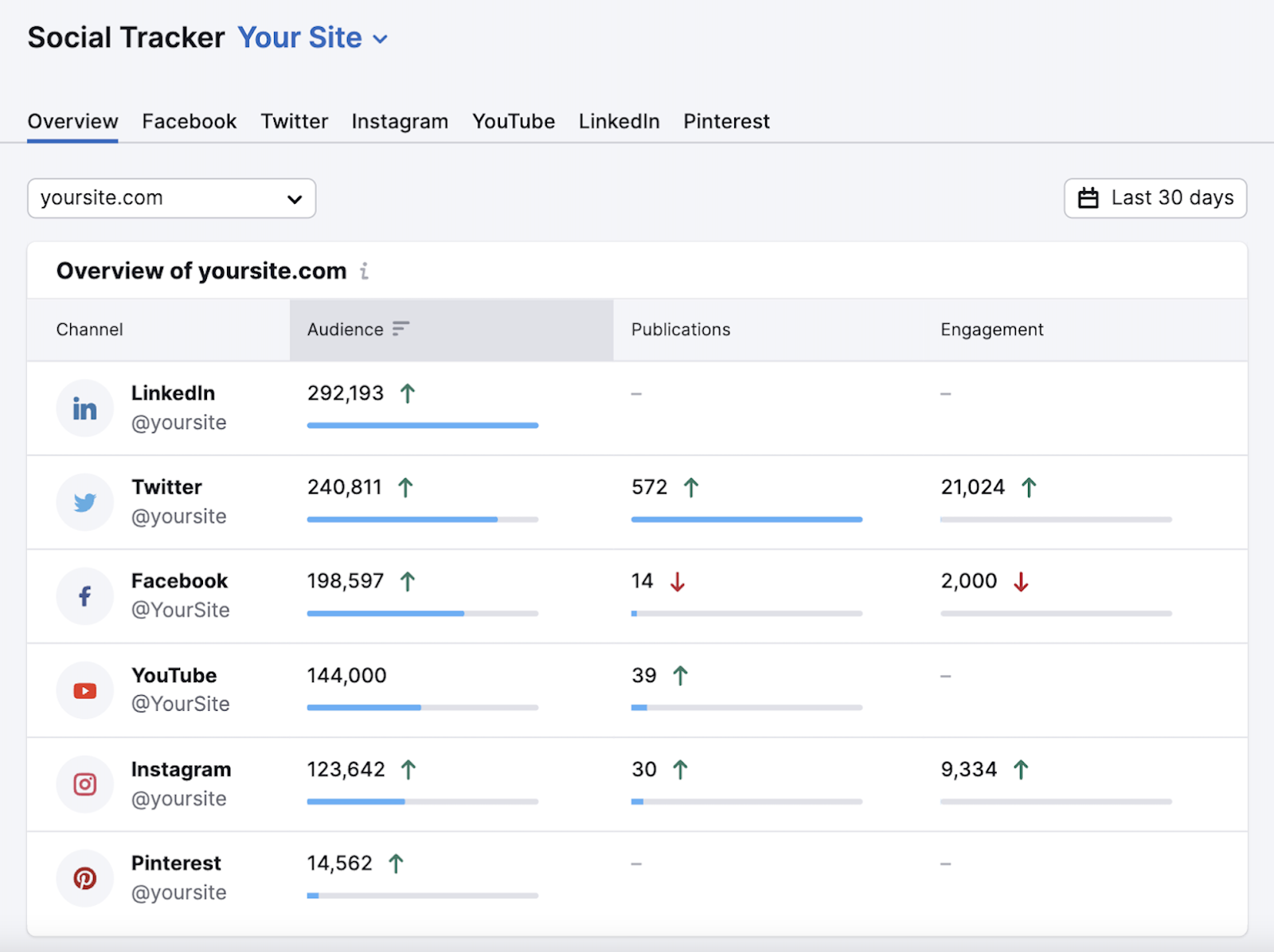
But it’s also wise to focus on increasing engagement. (The number of interactions such as likes, comments, clicks, and replies.)
Engagements are positive signals that you’re doing something right. And engaged followers may be more likely to become customers.
Measure your engagements in Social Tracker as well. You’ll find competitors’ data in the overview tab. Which can provide context—and give you something to aim for.
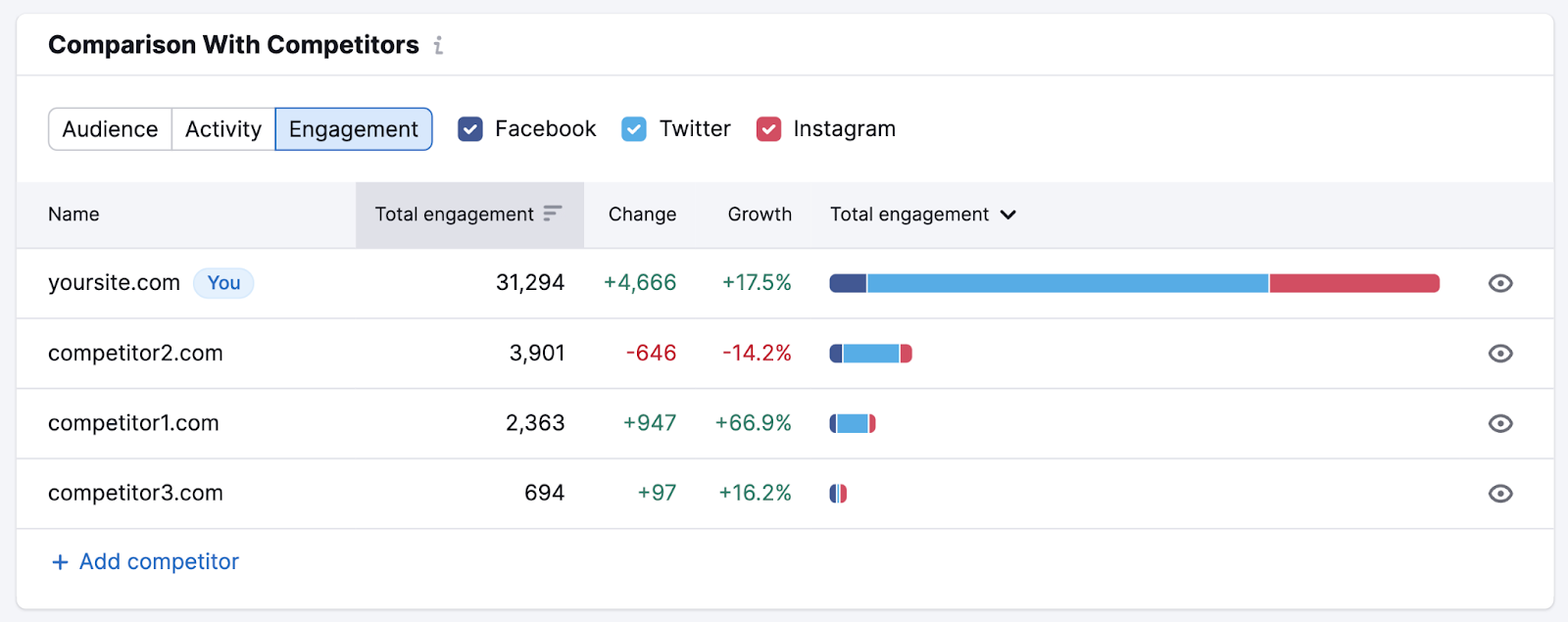
To monitor the success of individual posts, head to the “Posts” report in the “Facebook” or “Instagram” tab. Or the “Tweets” report in the “Twitter” tab.
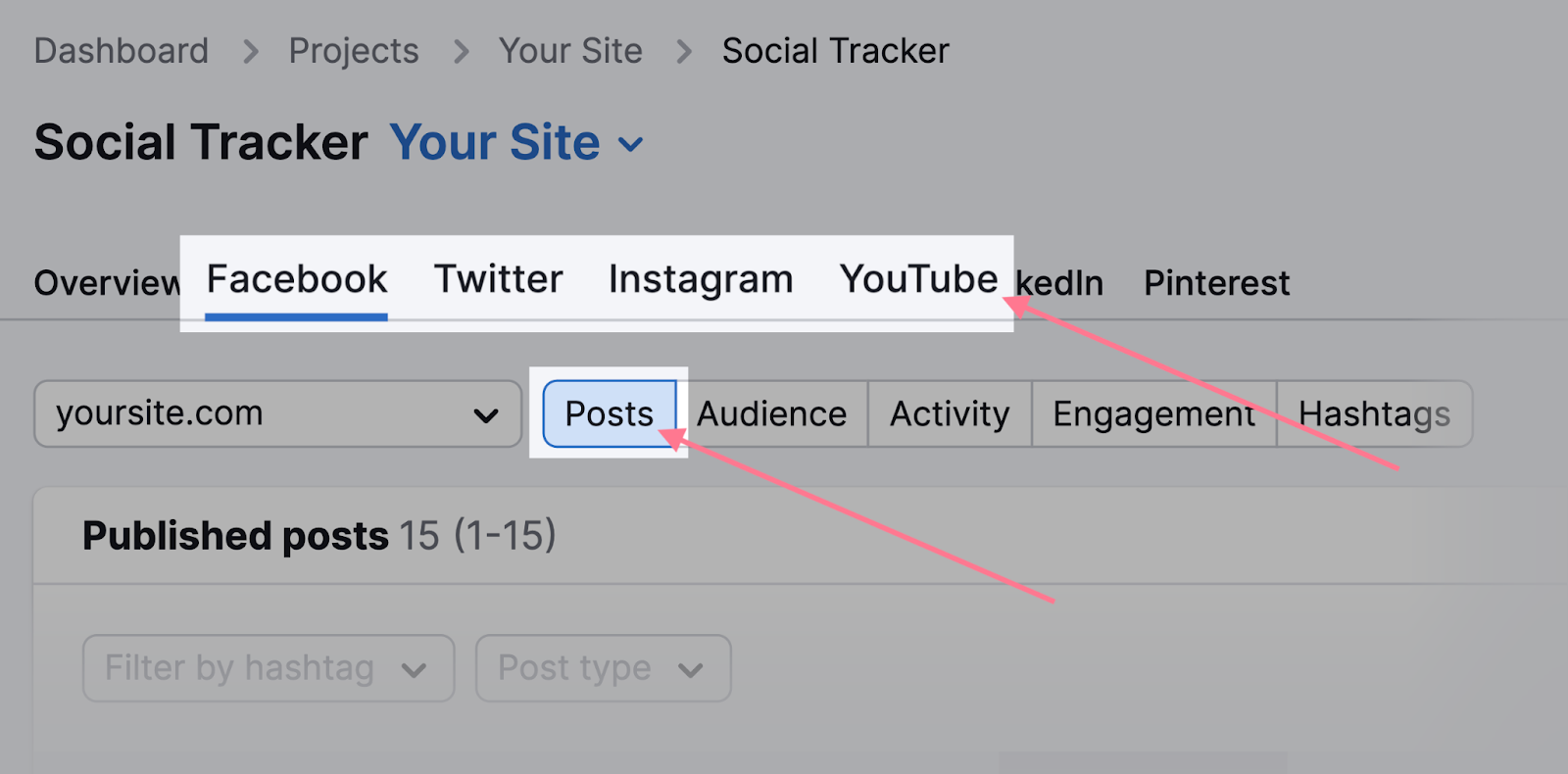
Engagement rate (“Eng. rate”) is a key metric for comparison here. (Visit our knowledge base to learn how it’s calculated.)
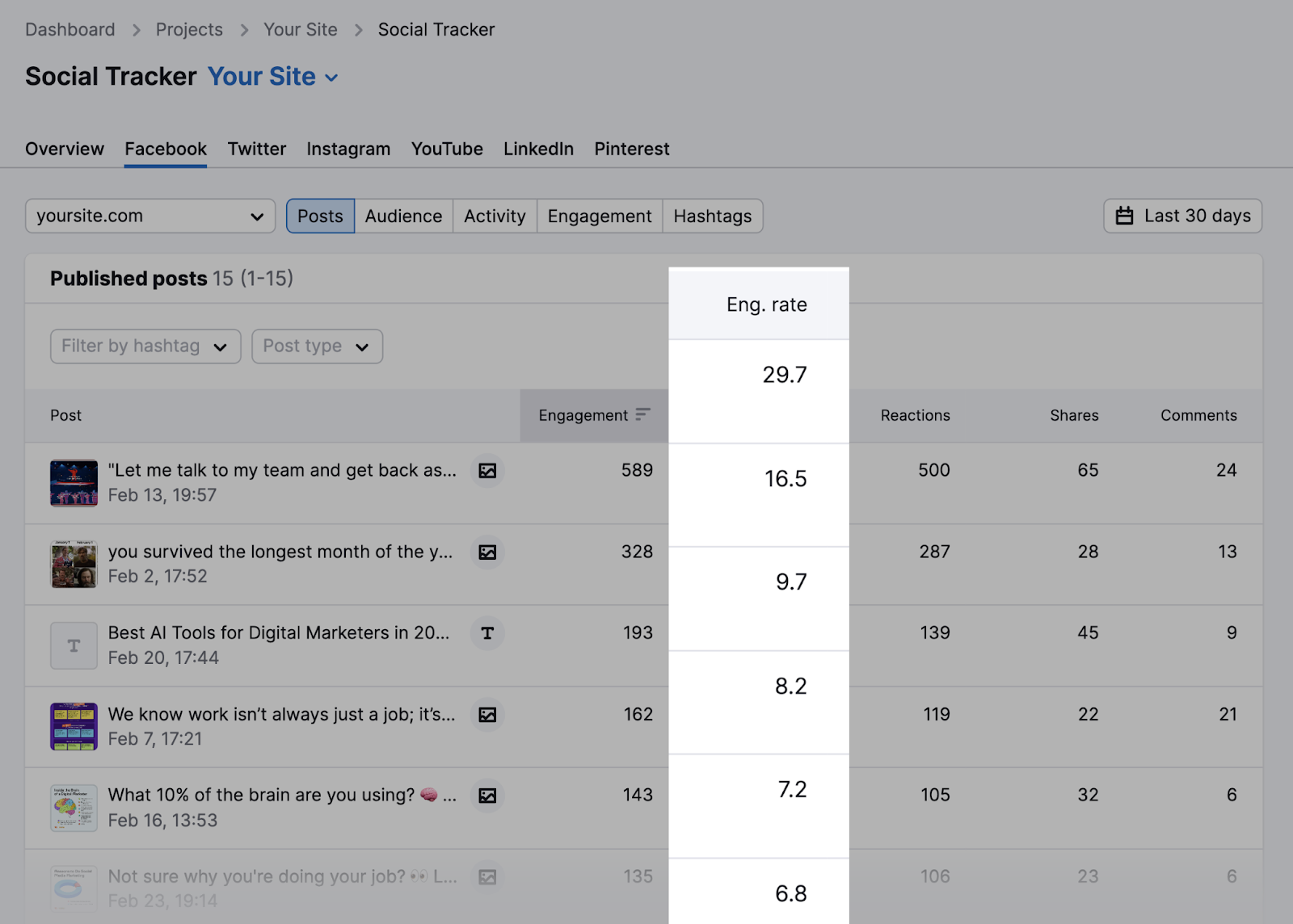
Click on the column head to sort from highest to lowest. That way, you’ll see which posts performed best in your chosen time period. Then, look for trends in post types, hashtags, and times.
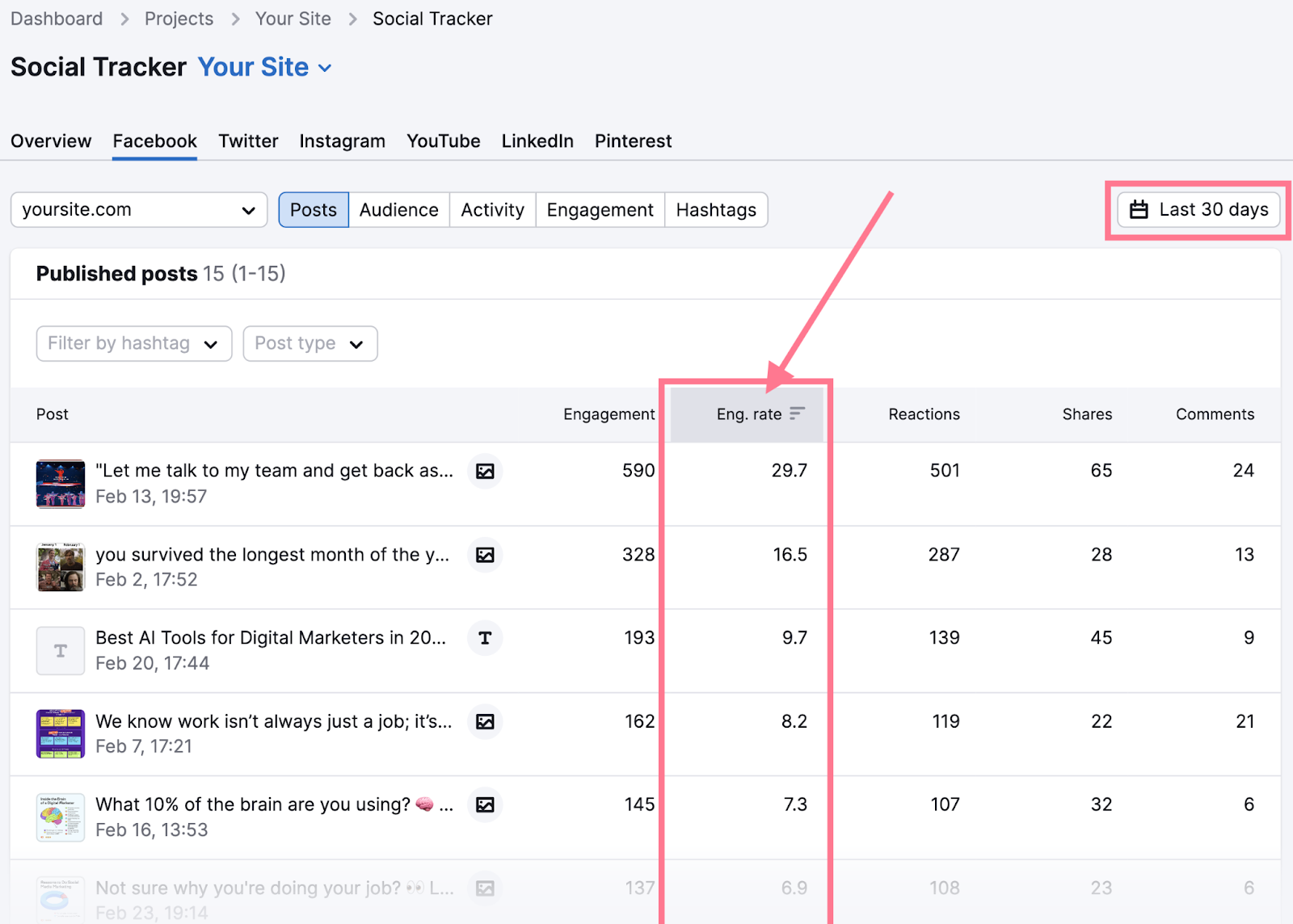
Findings here will help you refine your content strategy.
Let’s say your photo posts outperformed text posts on Facebook. Next month, you can invest more time in imagery. And see if it improves your overall engagement rate.
Further reading: 18 Social Media KPIs (and How to Track Them)
Semrush Social saves you time on social media management. And provides insights to improve your brand’s strategy.
Whether you’re a social media manager or run social accounts for your own business, you can use the toolkit to schedule posts, track performance, and more.

.png)